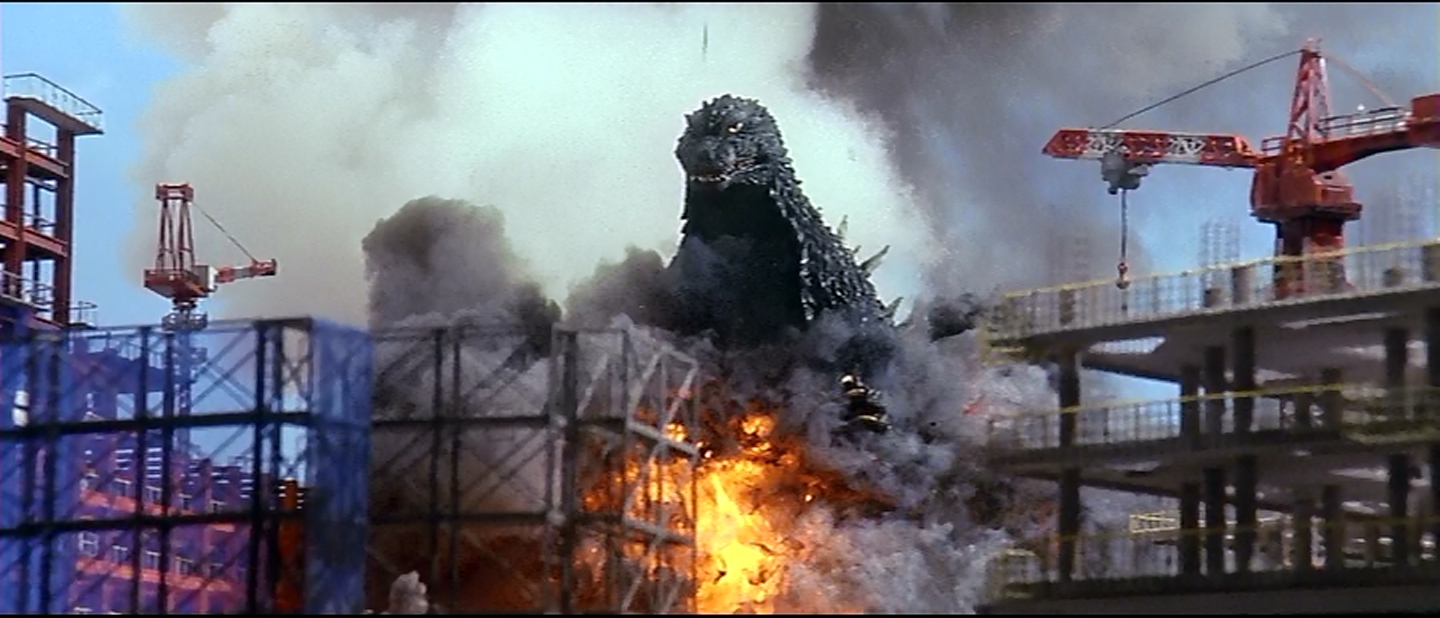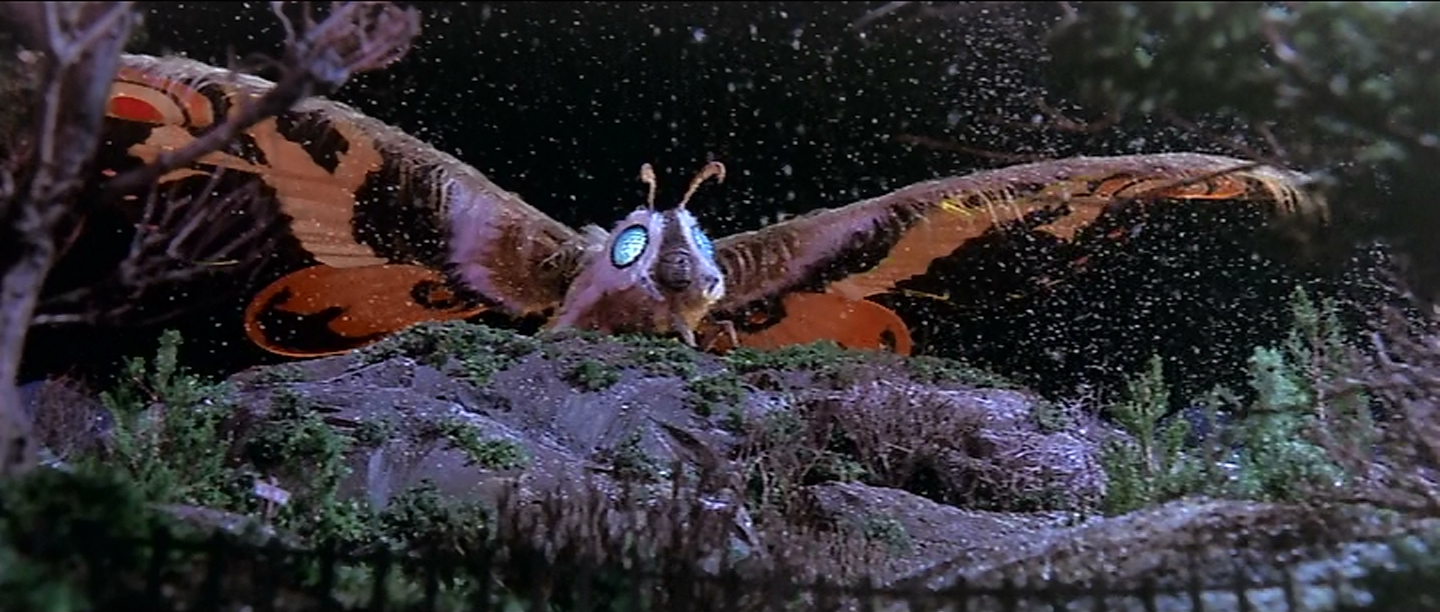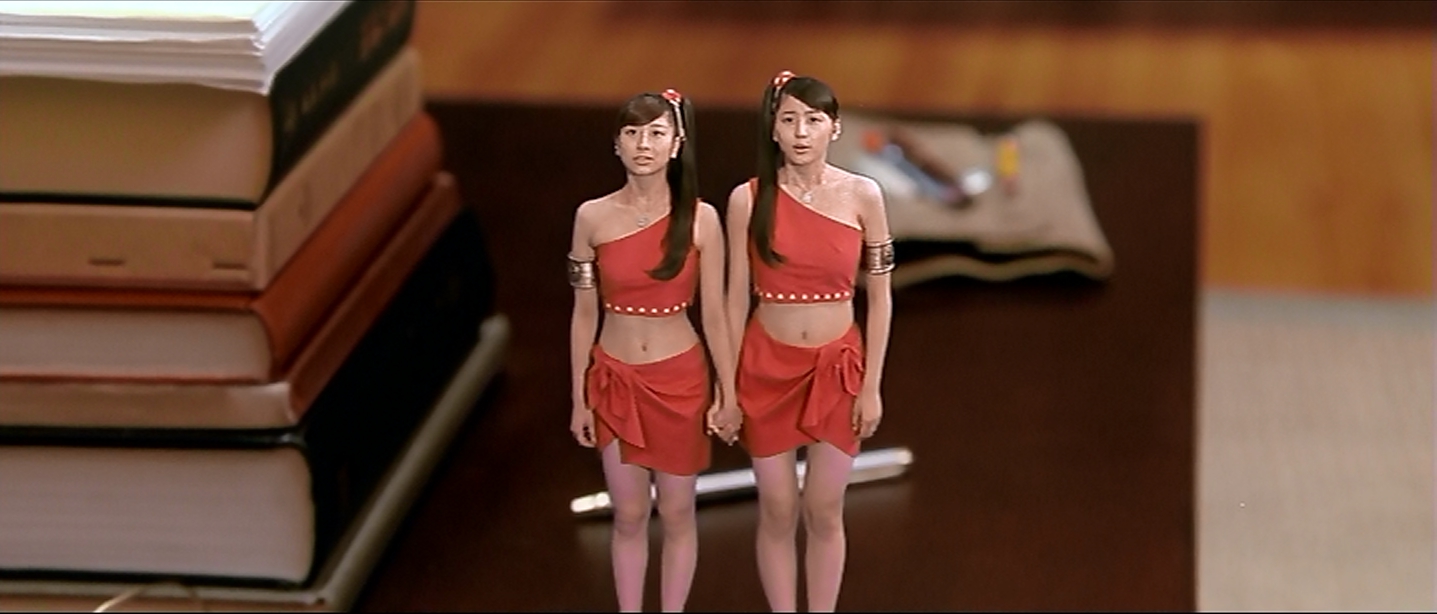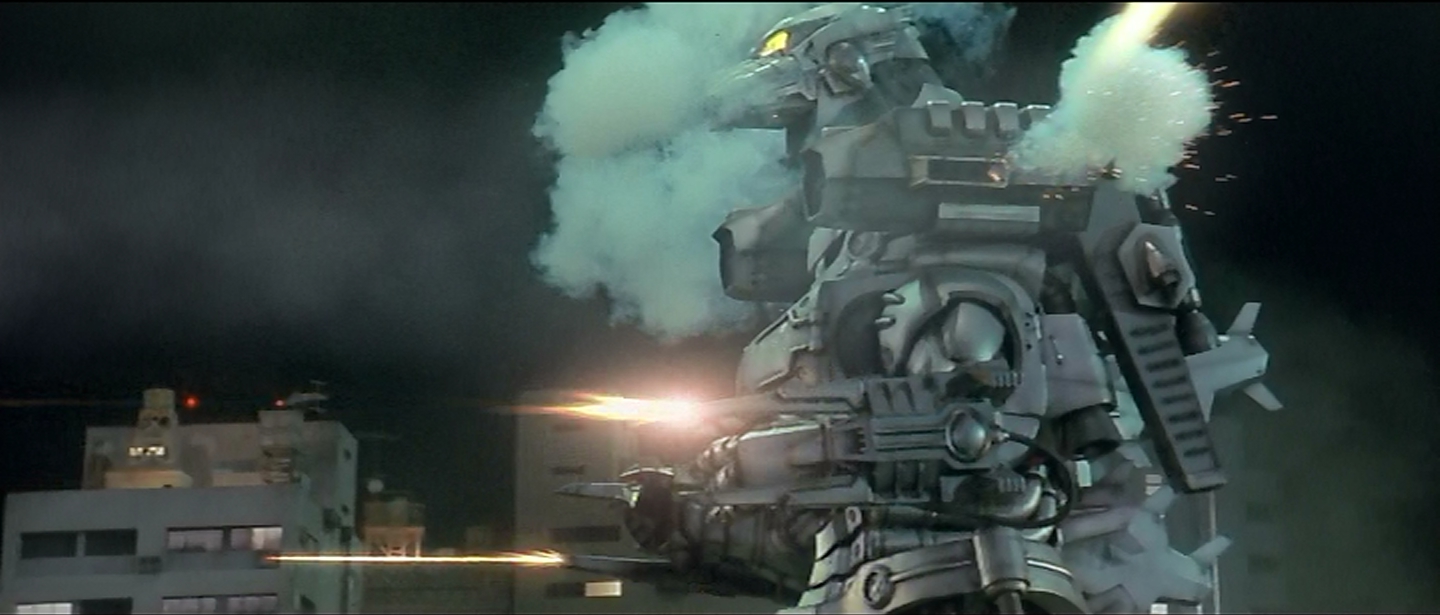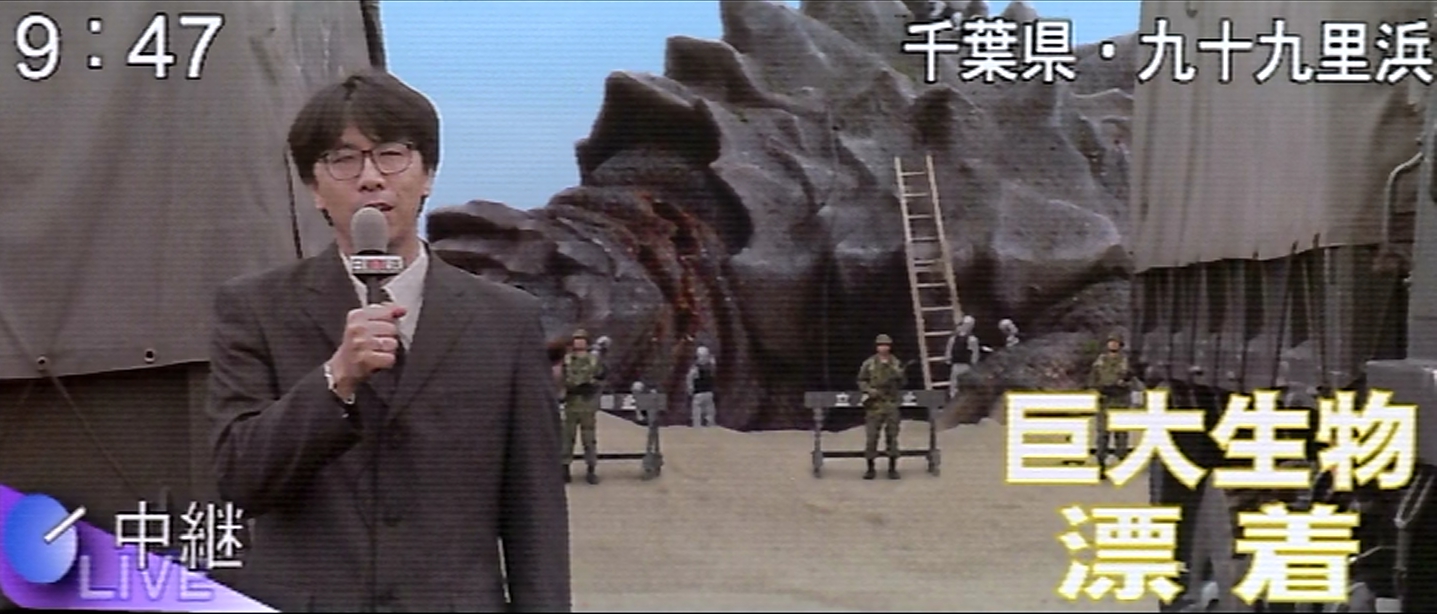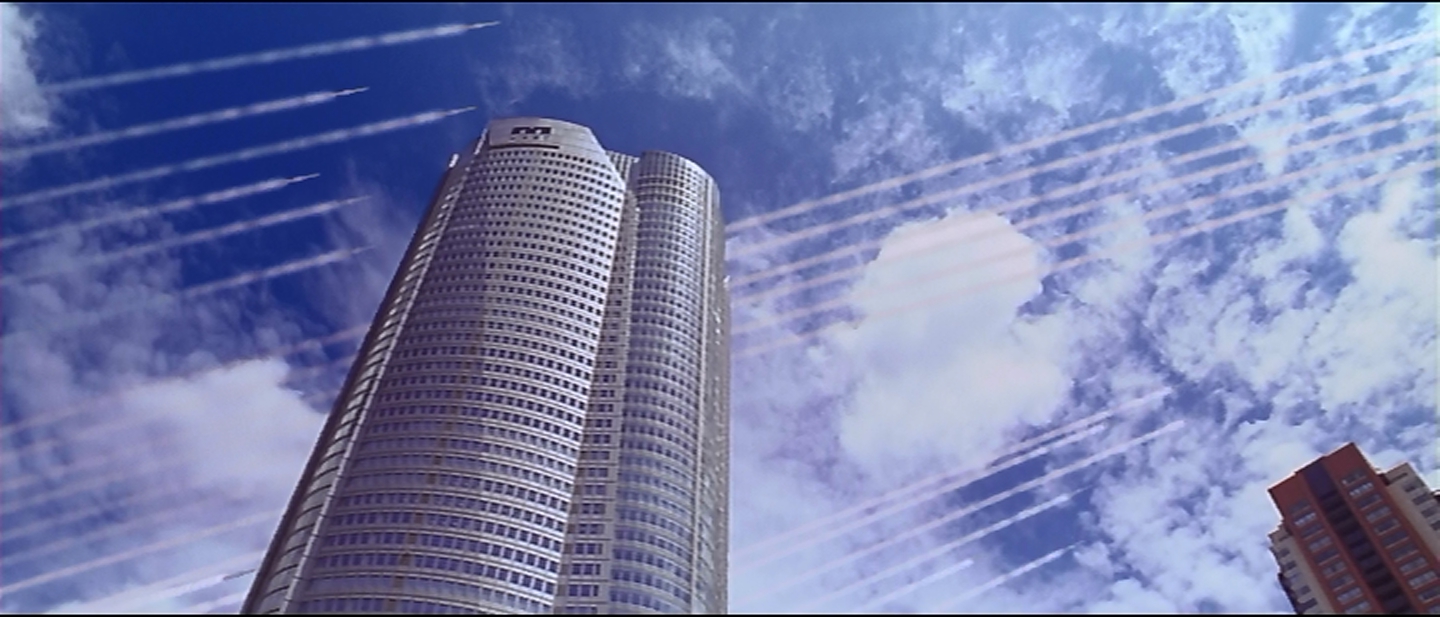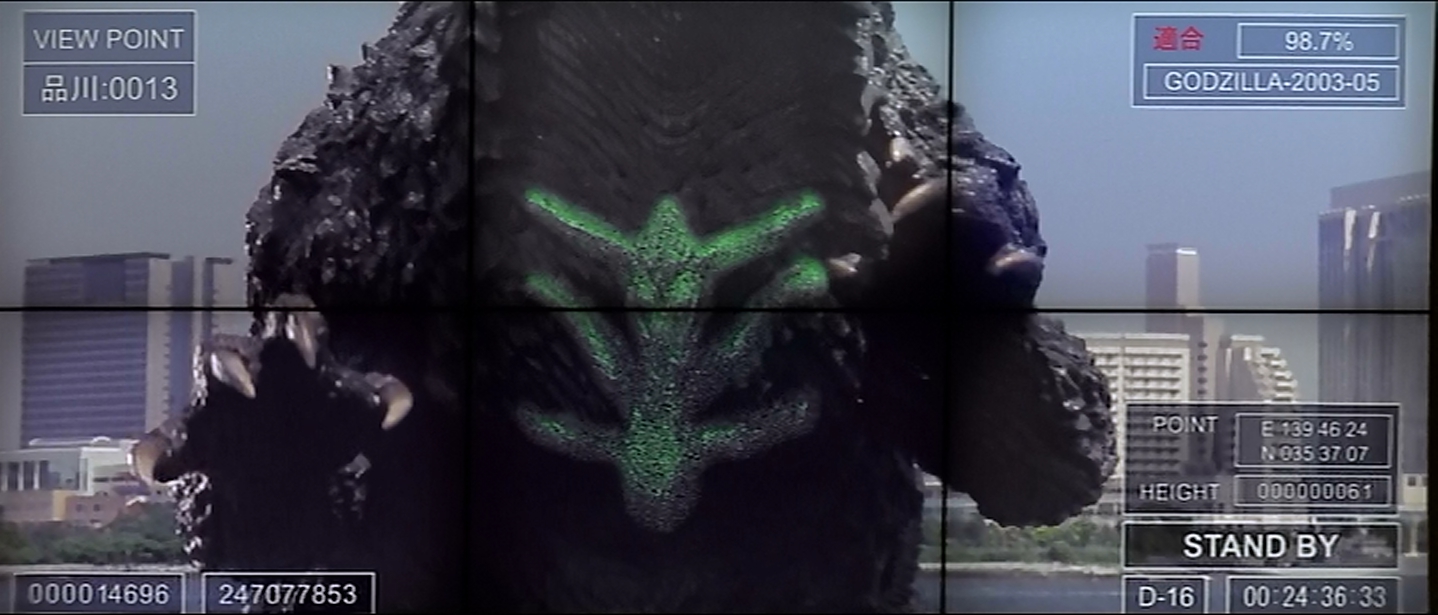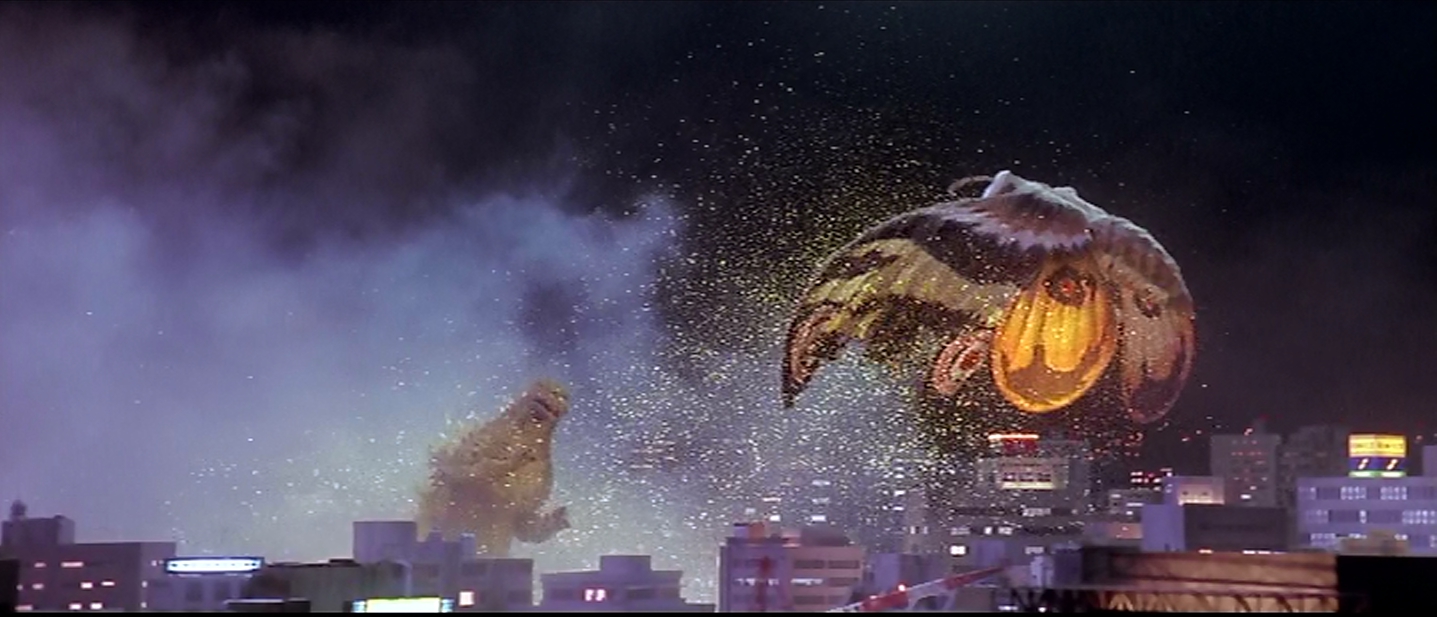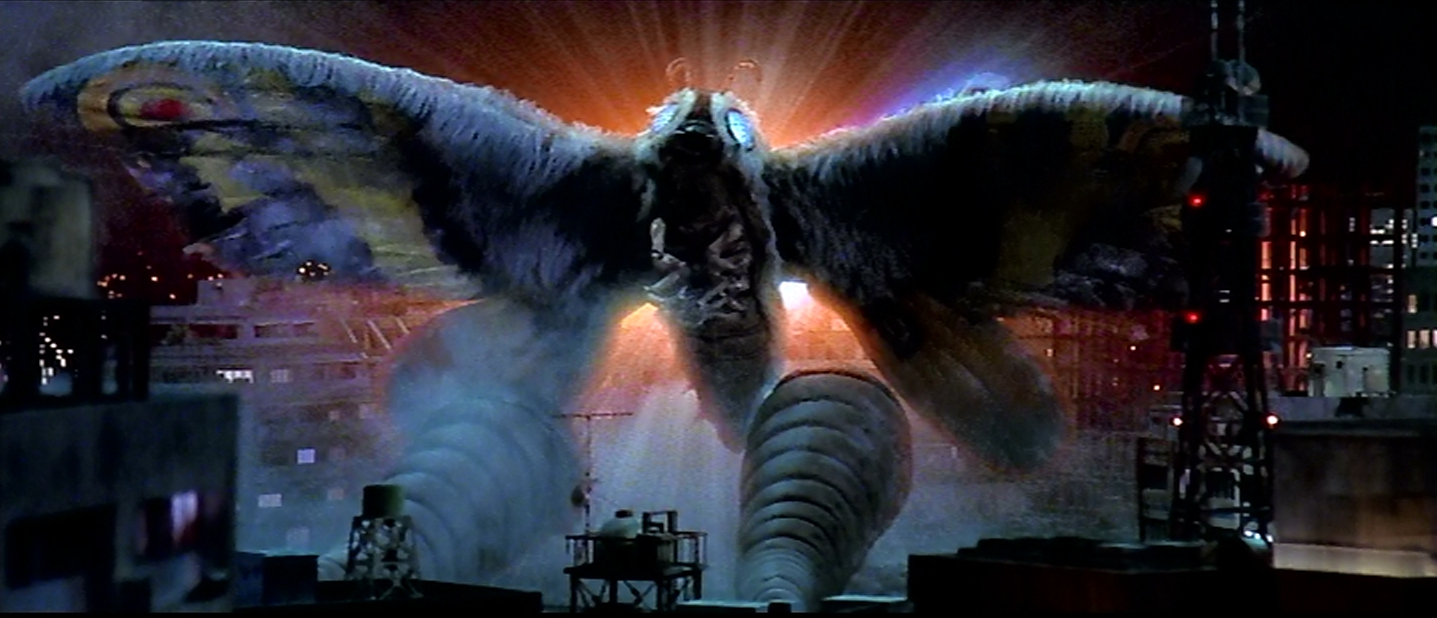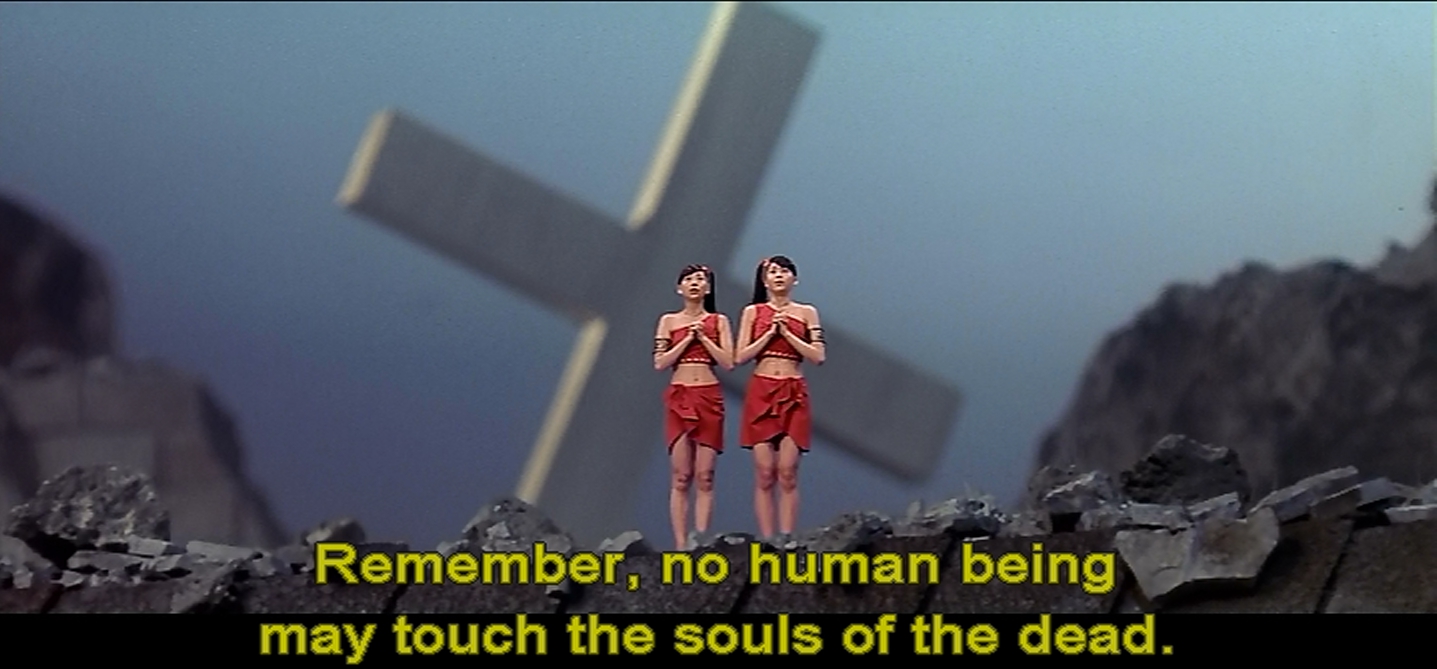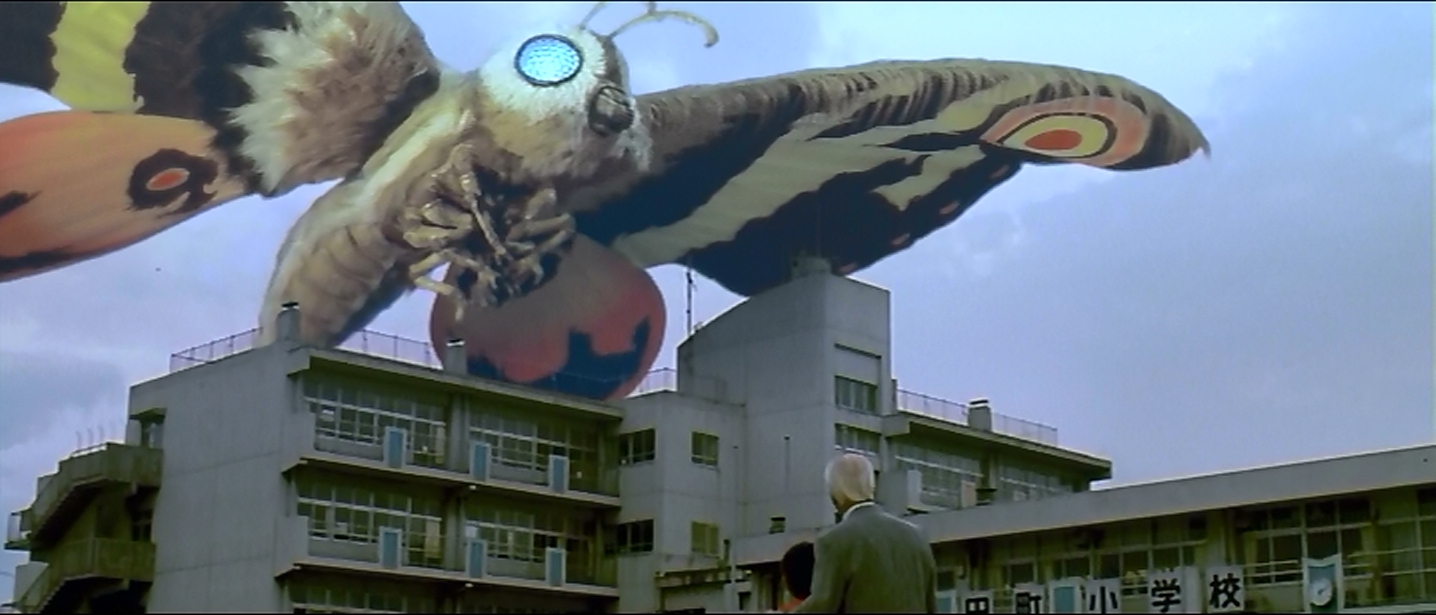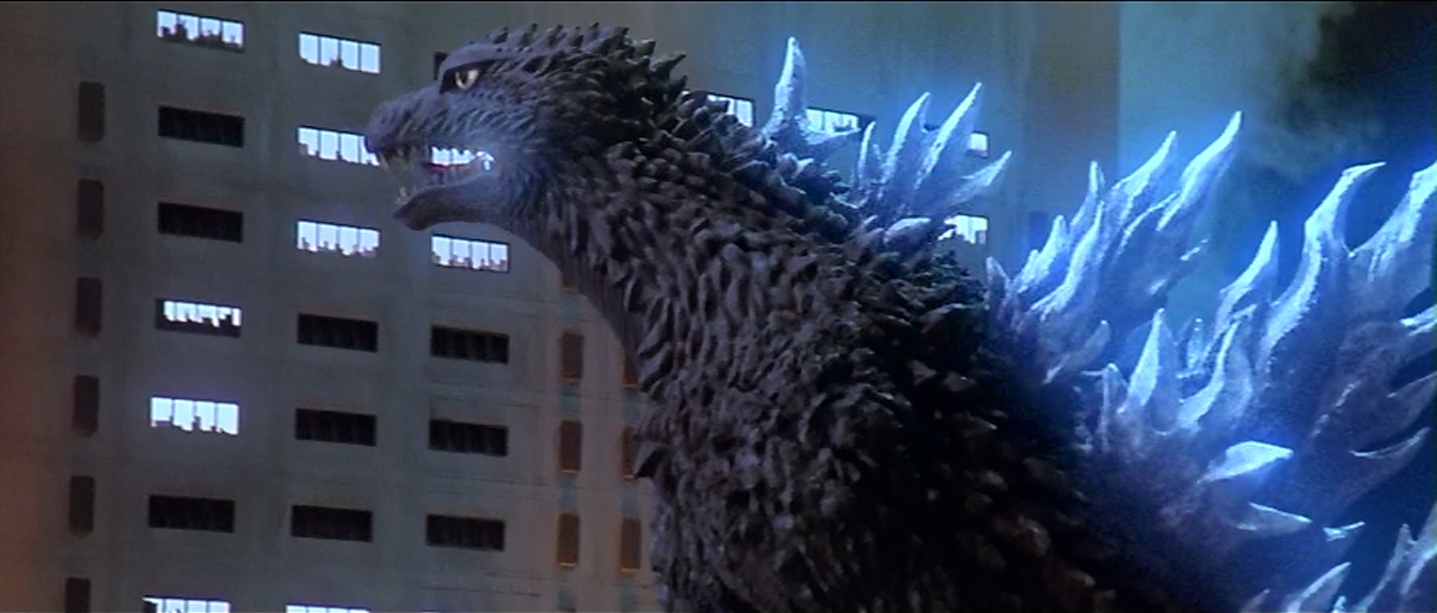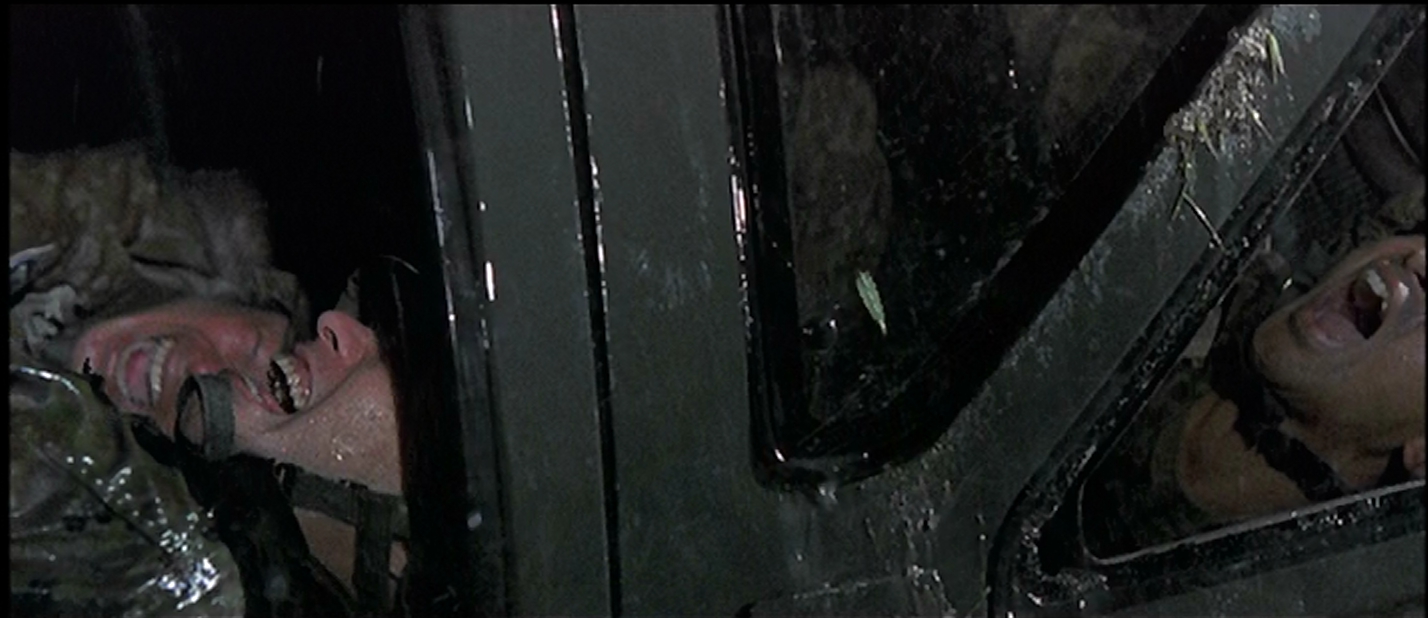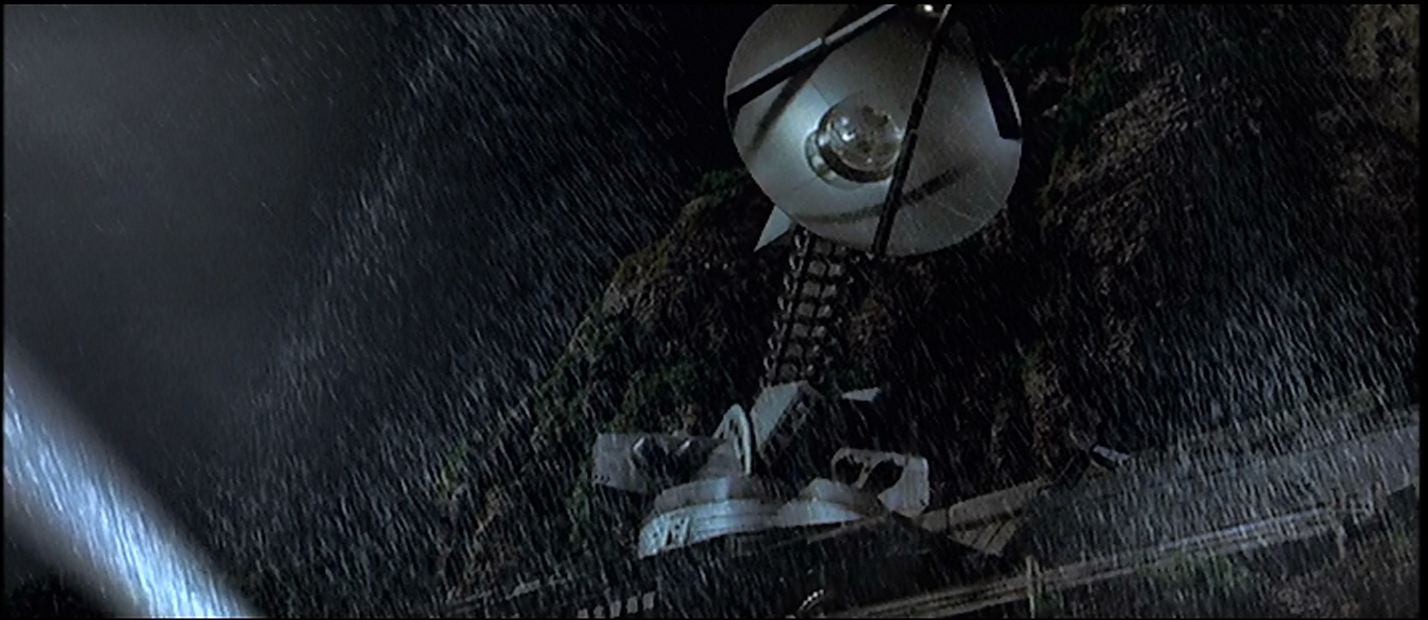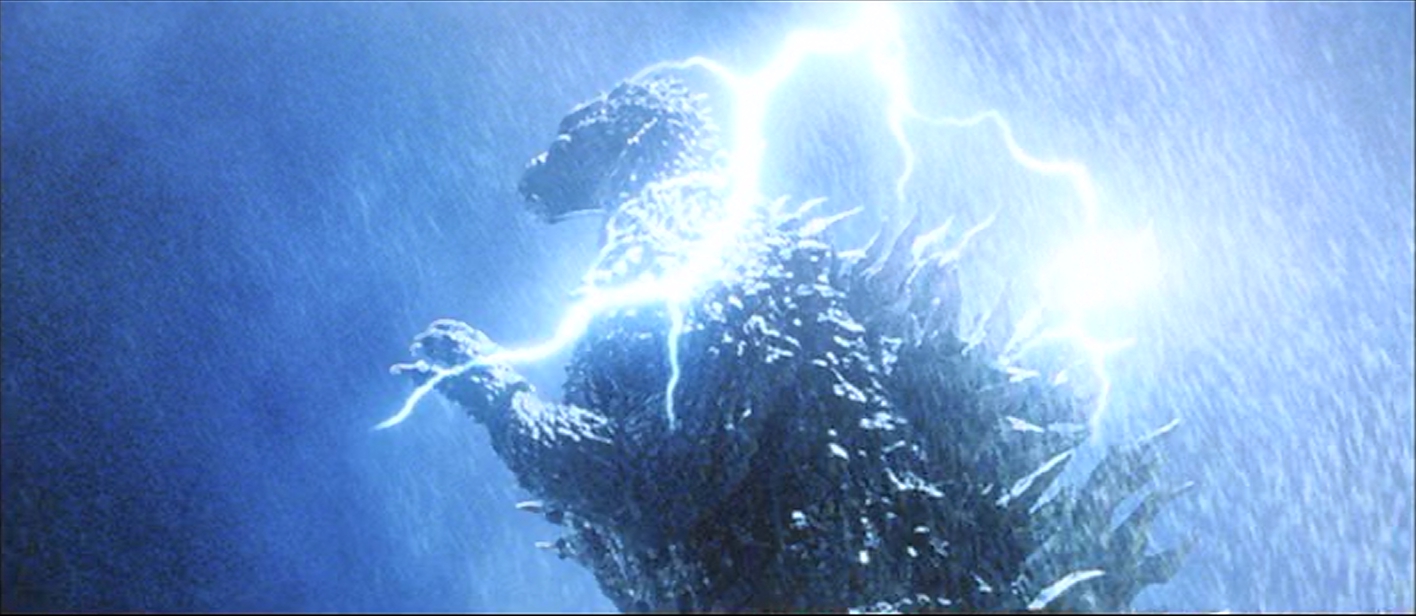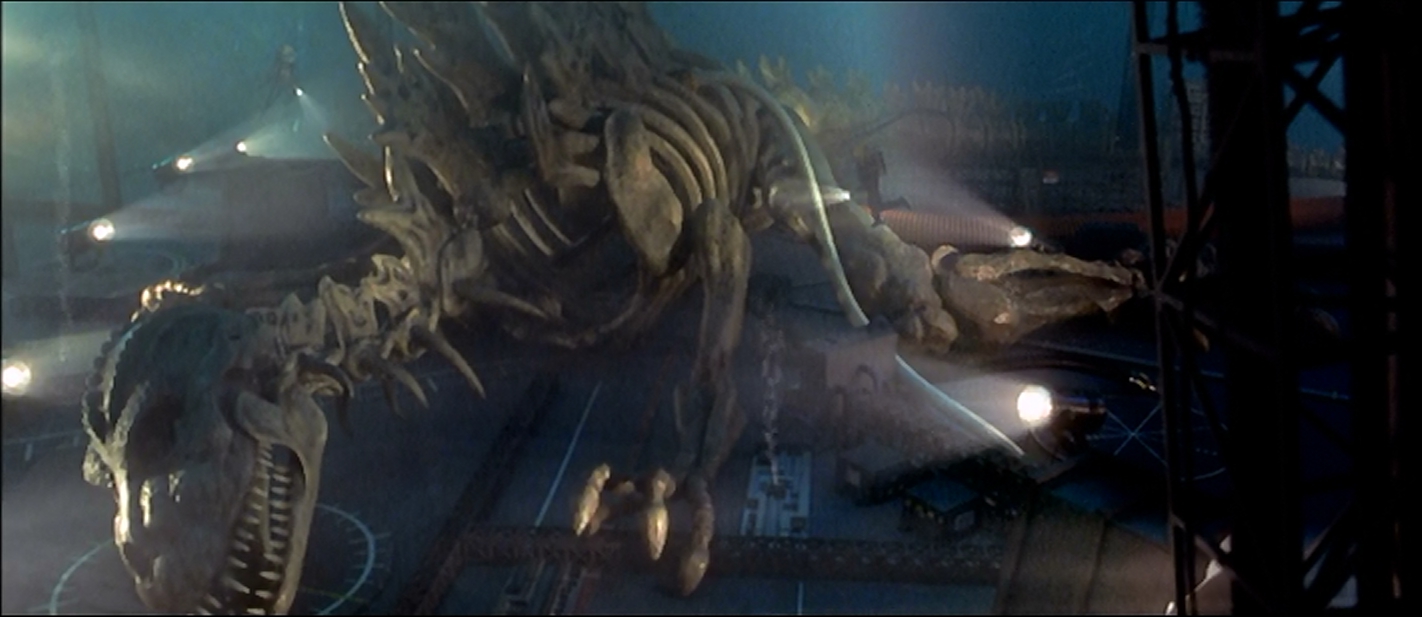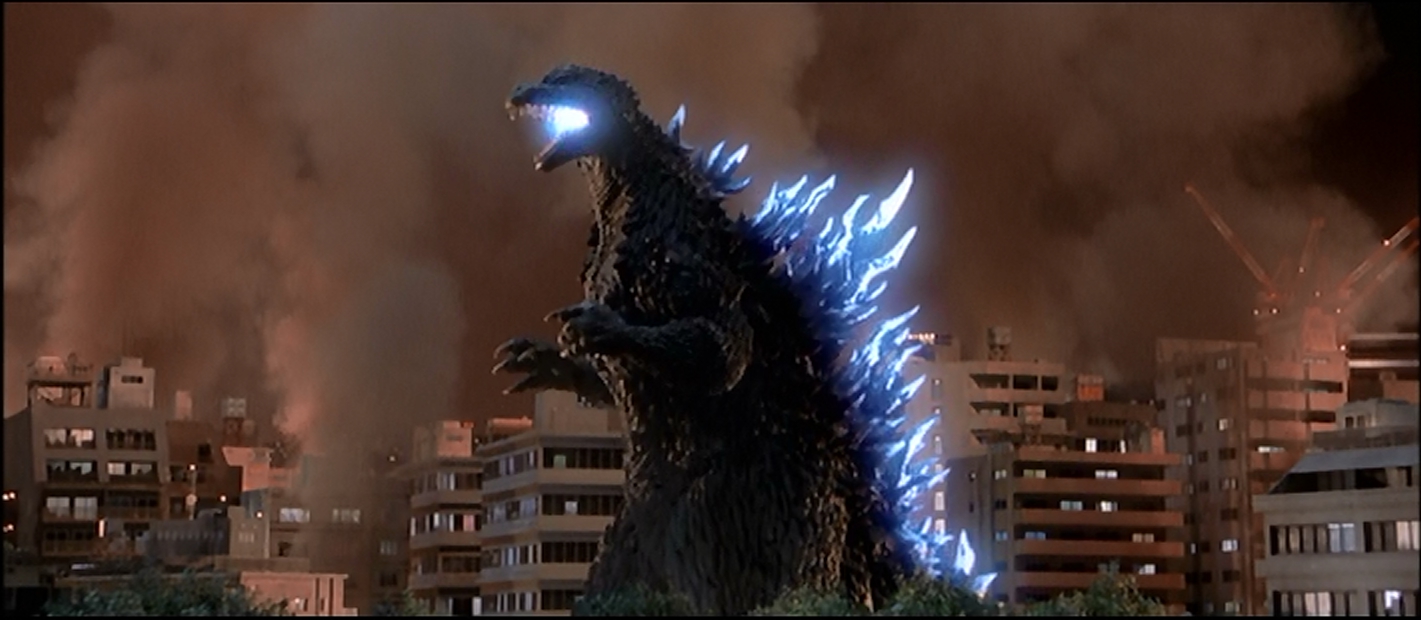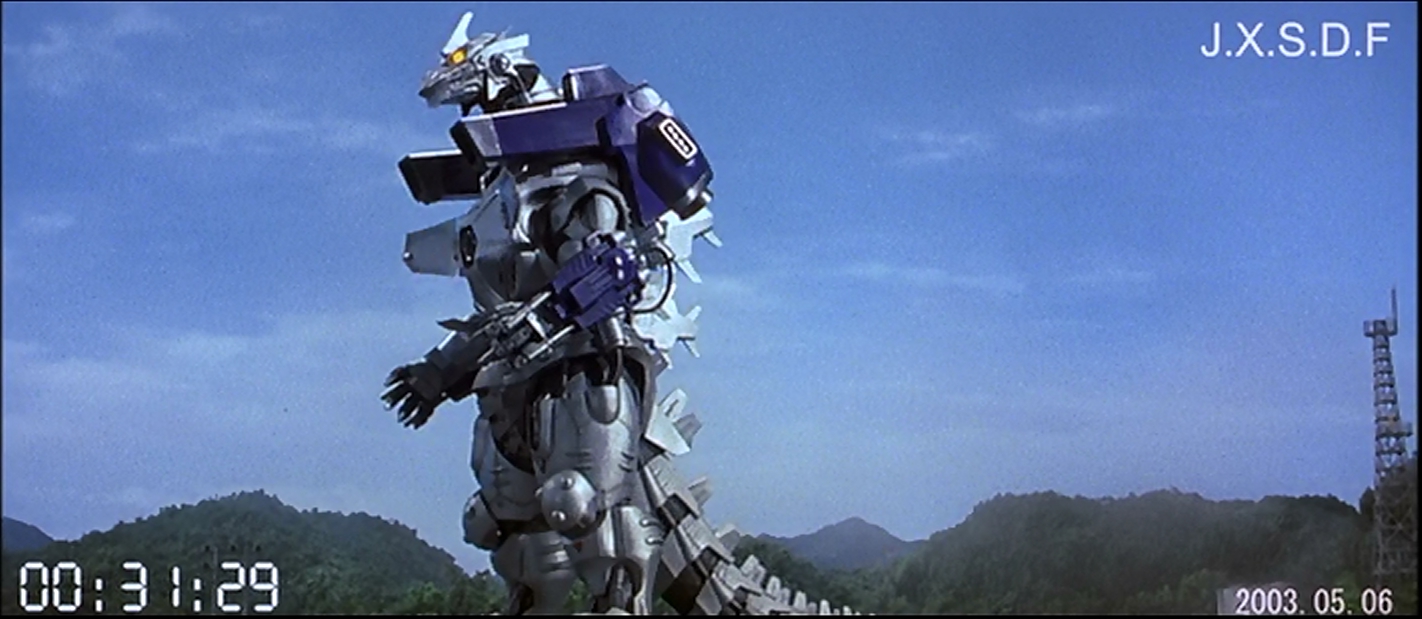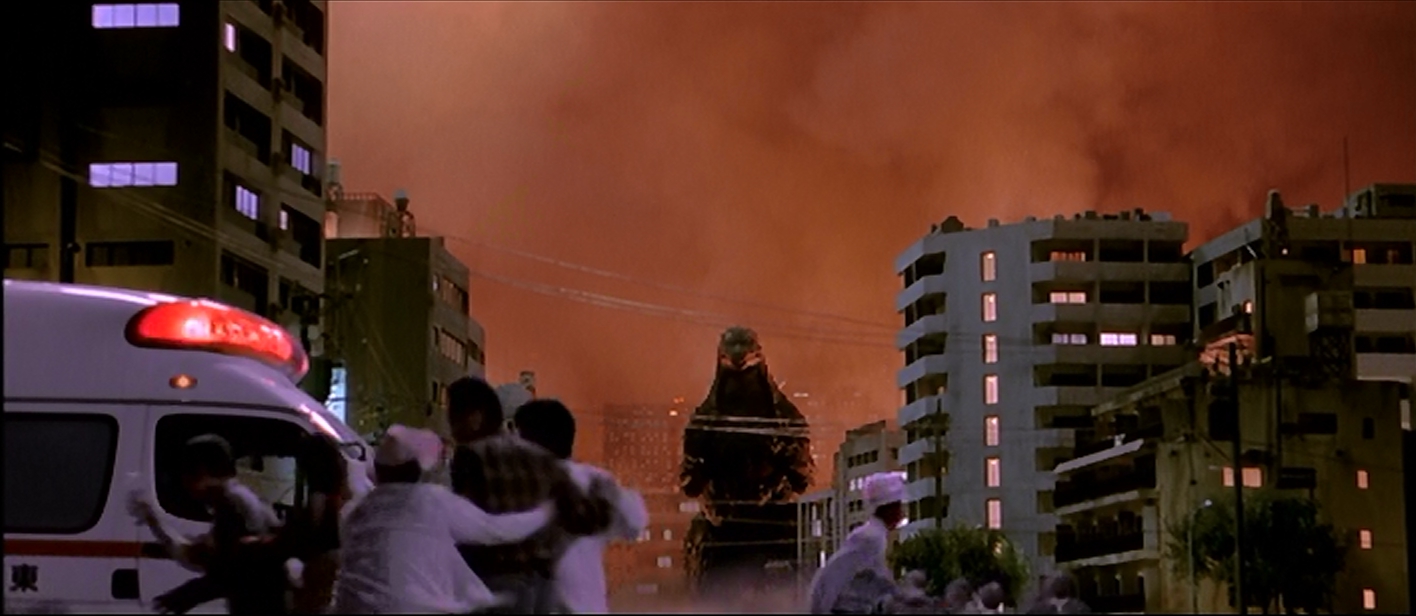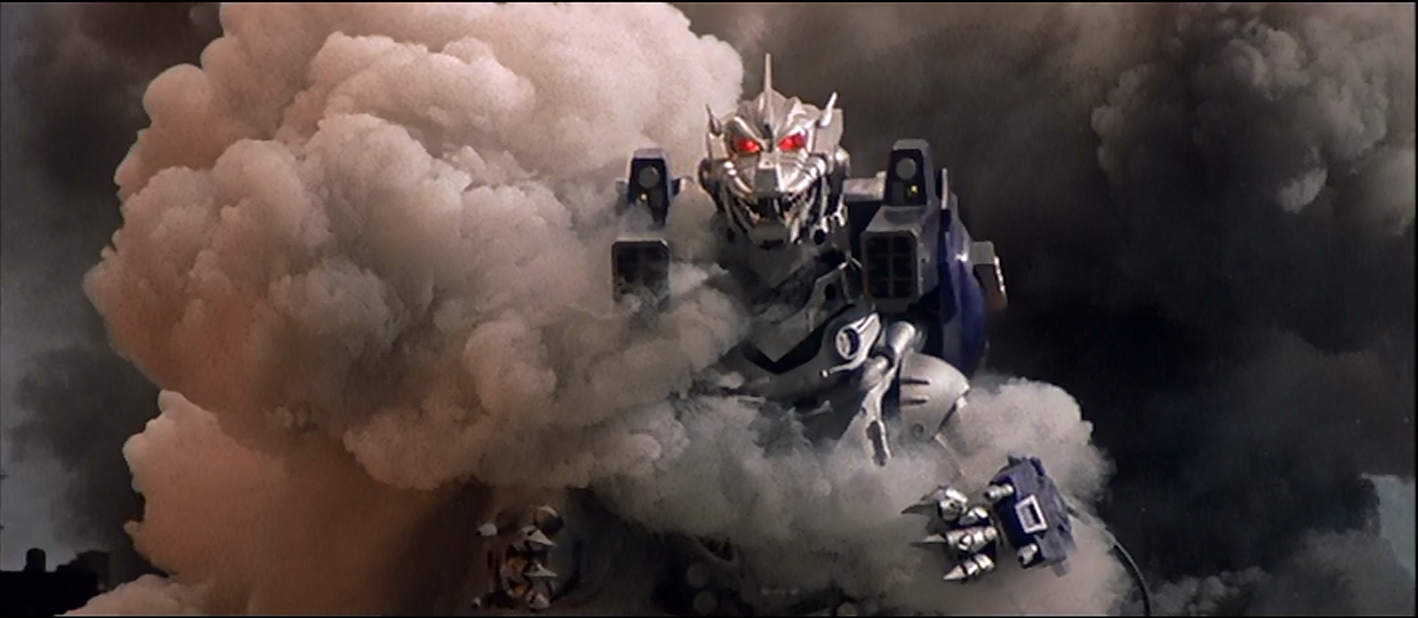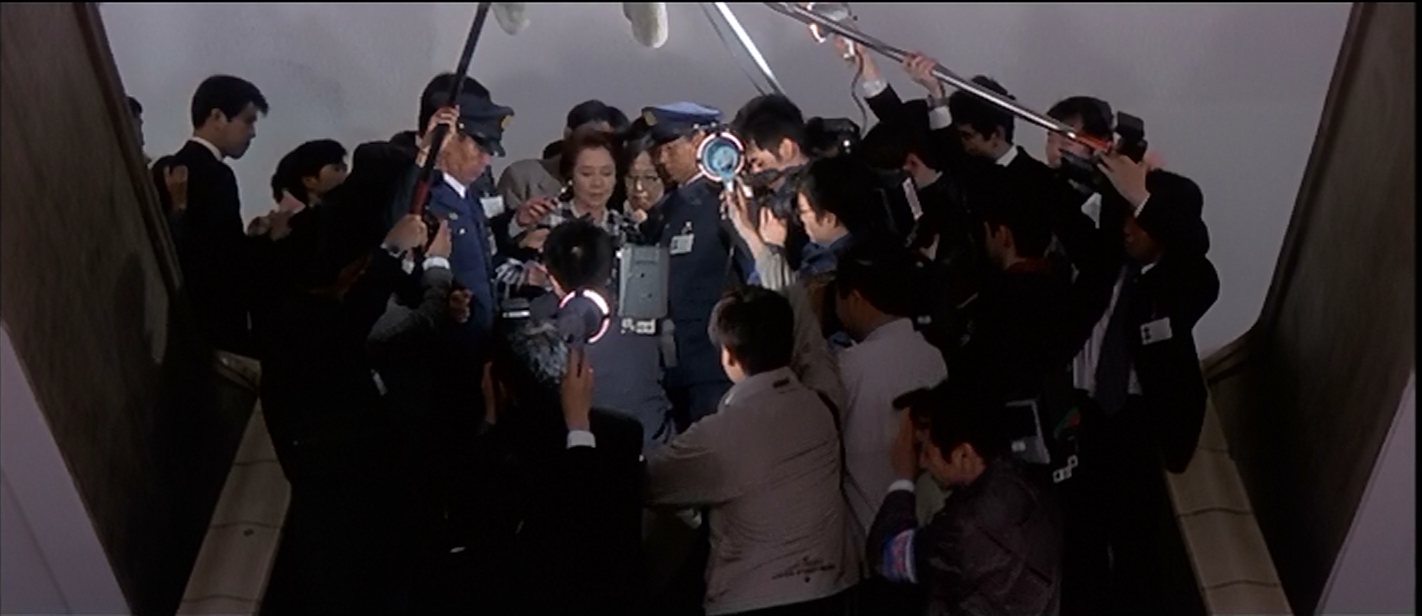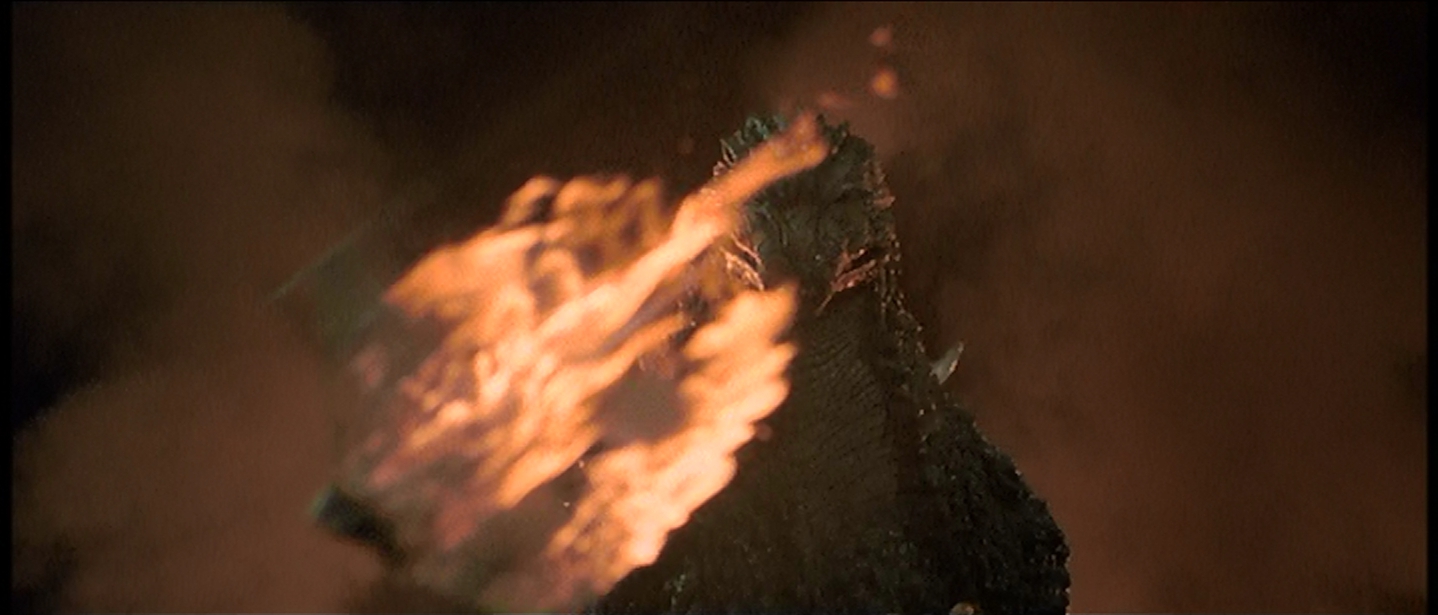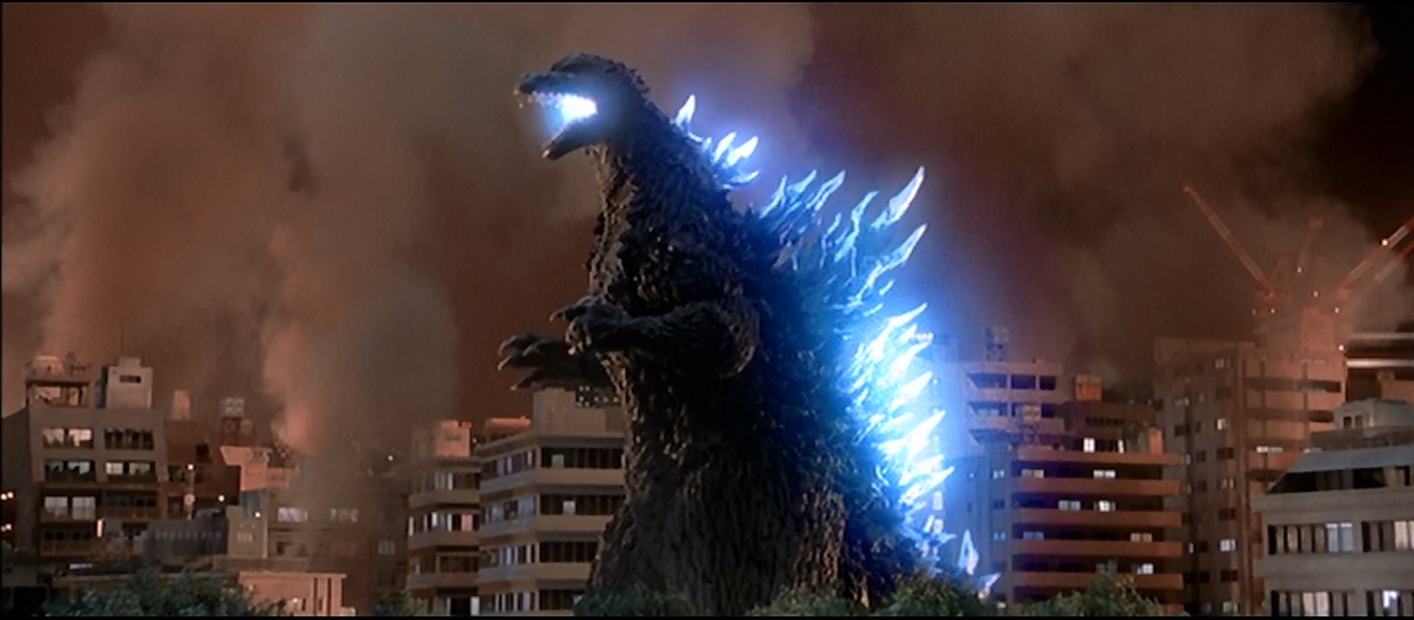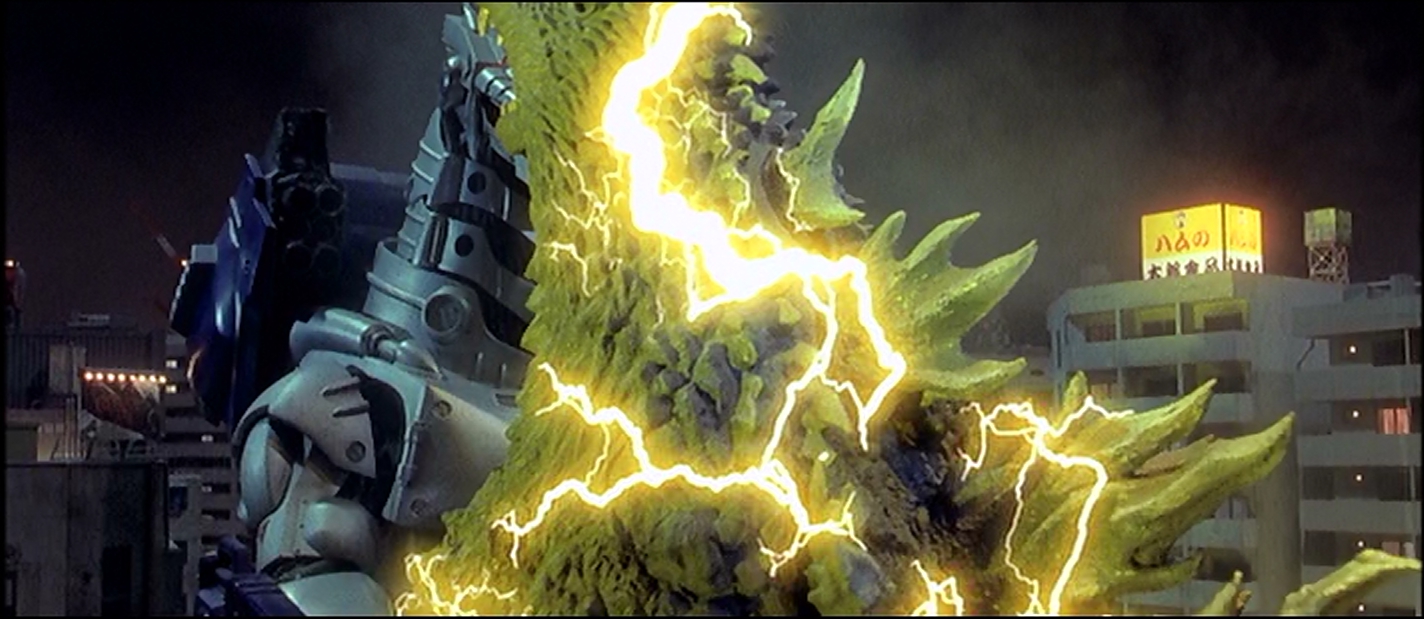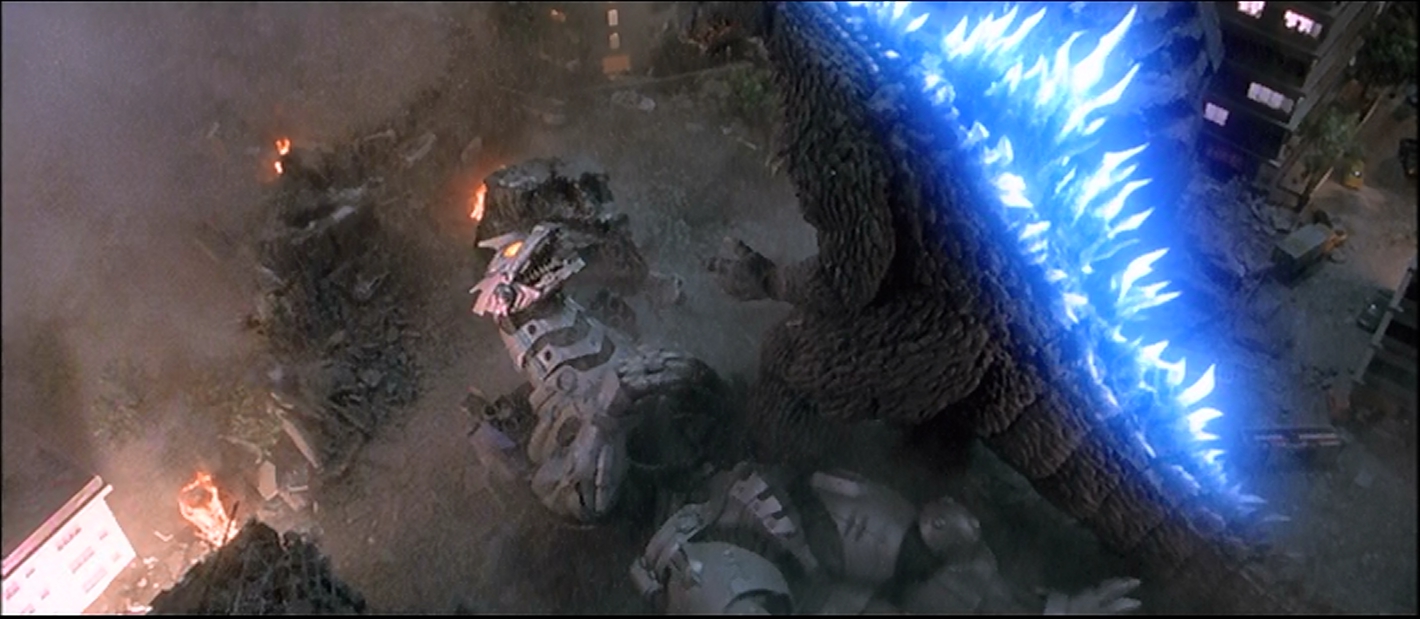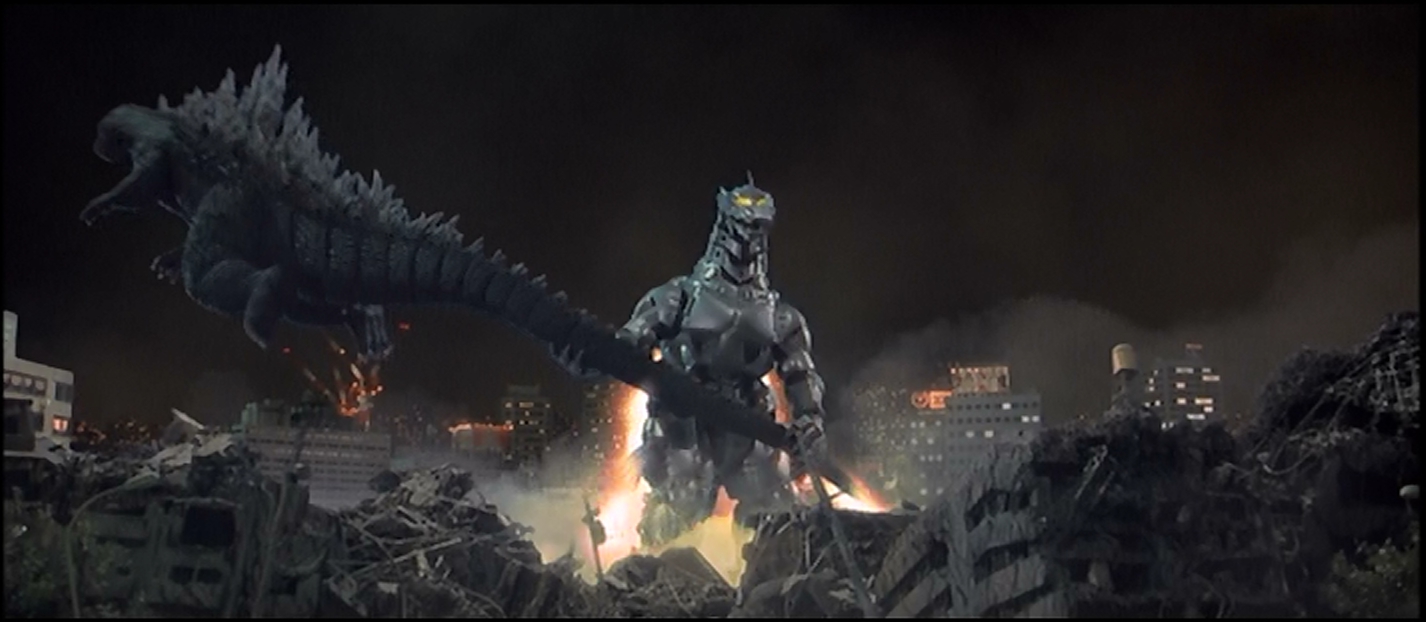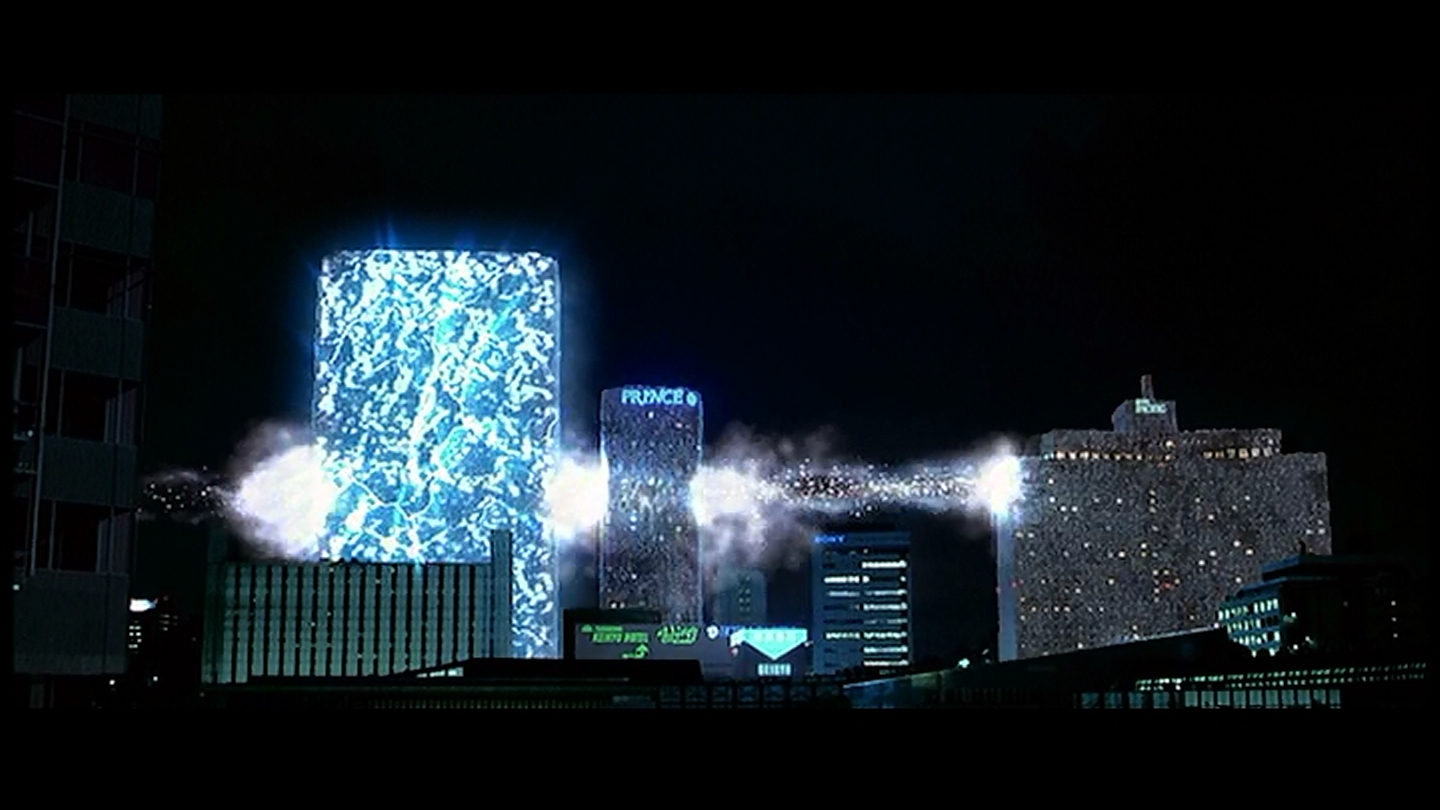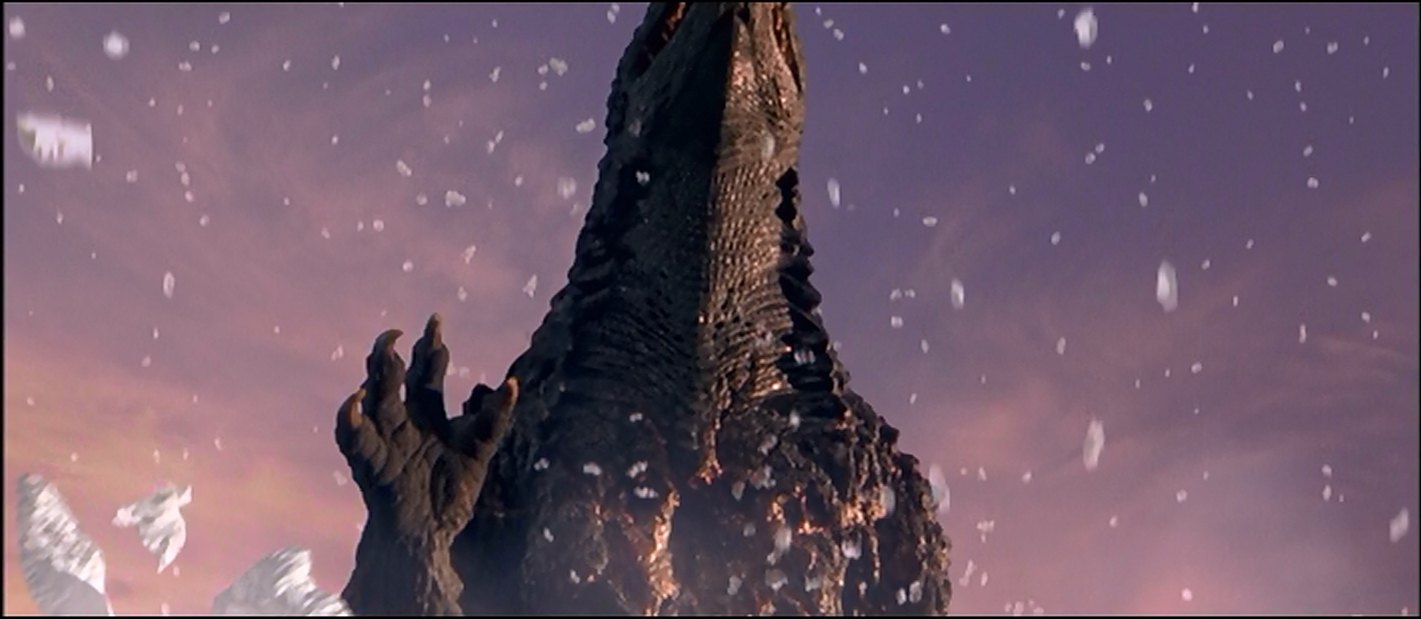With the commercial failure of
Godzilla vs Megaguirus, Toho looked around for ways to save their beloved franchise. But by this time, they had other irons in the fire. Toho was distributing anime. including Studio Ghibli and the Pokemon franchise, as well as producing low-cost, high return J-horror such as Ring and Pulse. If Godzilla could not perform, then perhaps it would have to be laid aside for a time. To avoid this, they tapped
Shûsuke Kaneko, who had done a brilliant job revitalizing the Gamera franchise, to helm their new Godzilla film. This turned out to be a smart move.
As with previous and subsequent Millennium films,
Godzilla, Mothra, King Ghidorah, Giant Monsters All-Out Attack (hereafter GMK) occupies its own continuity. The first Godzilla film is acknowledged, but the other twenty-four are not. Except for the moment when the film casts some shade on the
1998 Godzilla.
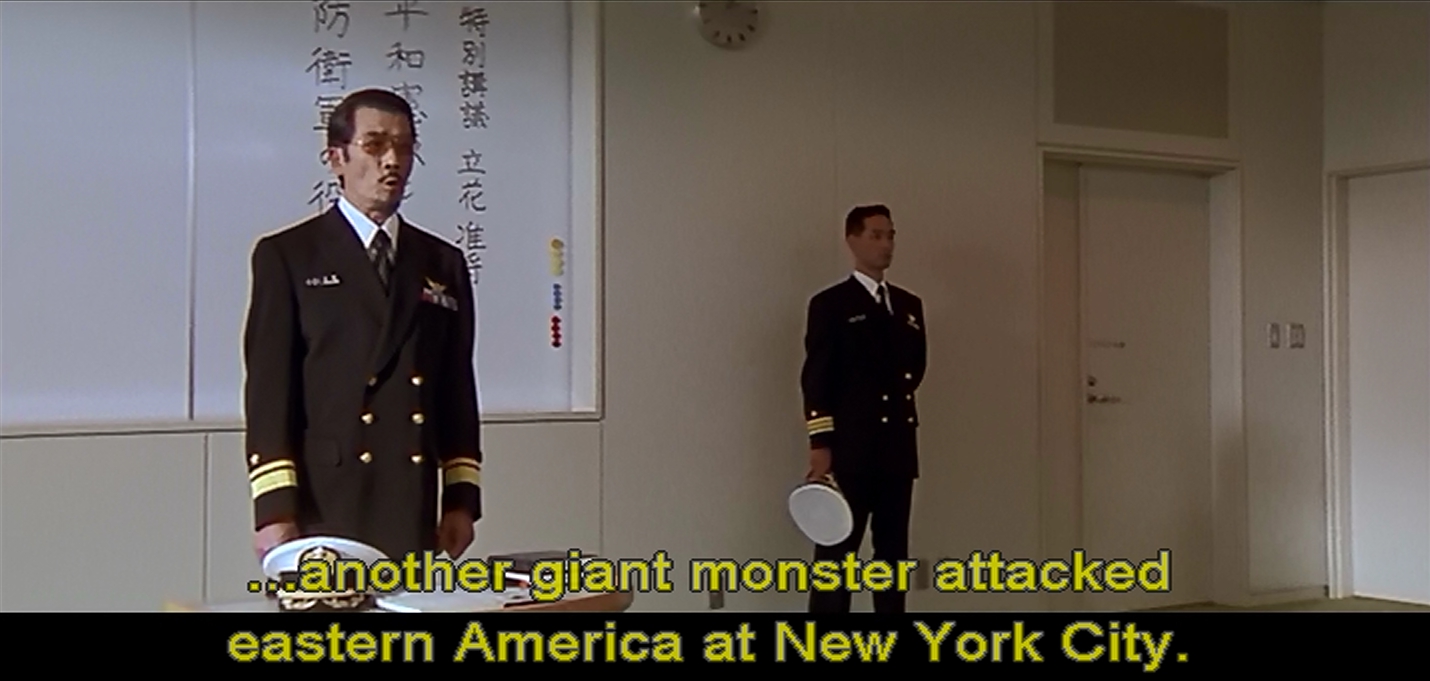
We begin with a lecture. Commander Taizô Tachibana is talking to a group of students about the function of the Japanese Self-Defence Forces, which has only been tested against Godzilla. Although this film closely engages the character of the admiral and the military, it does so with a very different bent than have previous Godzilla films. Neither there for a useless show (the Showa series), a serious challenge (any film in which
MechaGodzilla is built by humans, including the next two films in the Millennium series), or bumblers causing as much destruction as the monster (
Godzilla 1998) the military here is neither valorized nor there for comedy. They are treated as people. The man put in charge of the anti-Godzilla task force is a blustering foot-dragger, refusing to believe that Godzilla is even real at the beginning, and spouting inappropriate military doctrine ("Try attacking it from the side! It must have a weak point!") while his men get killed.
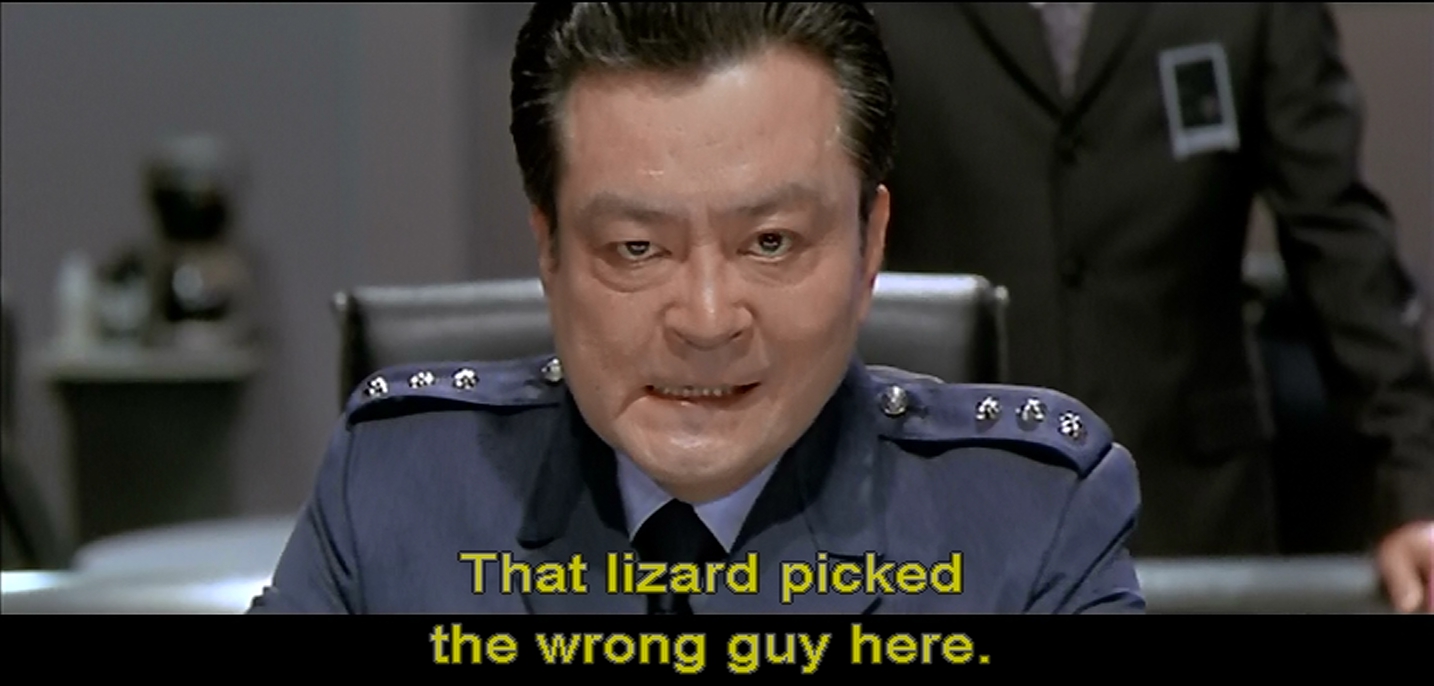
Taizô Tachibana on the other hand, is very much a lead-from-the-front sort of man, who takes responsibility for his actions, and decides to do the dangerous mission himself. He does not relish the thought of combat, and admits to being afraid just before he goes into battle. it is not the military as a whole that this film praises, but the resonsible individuals who do their duty.
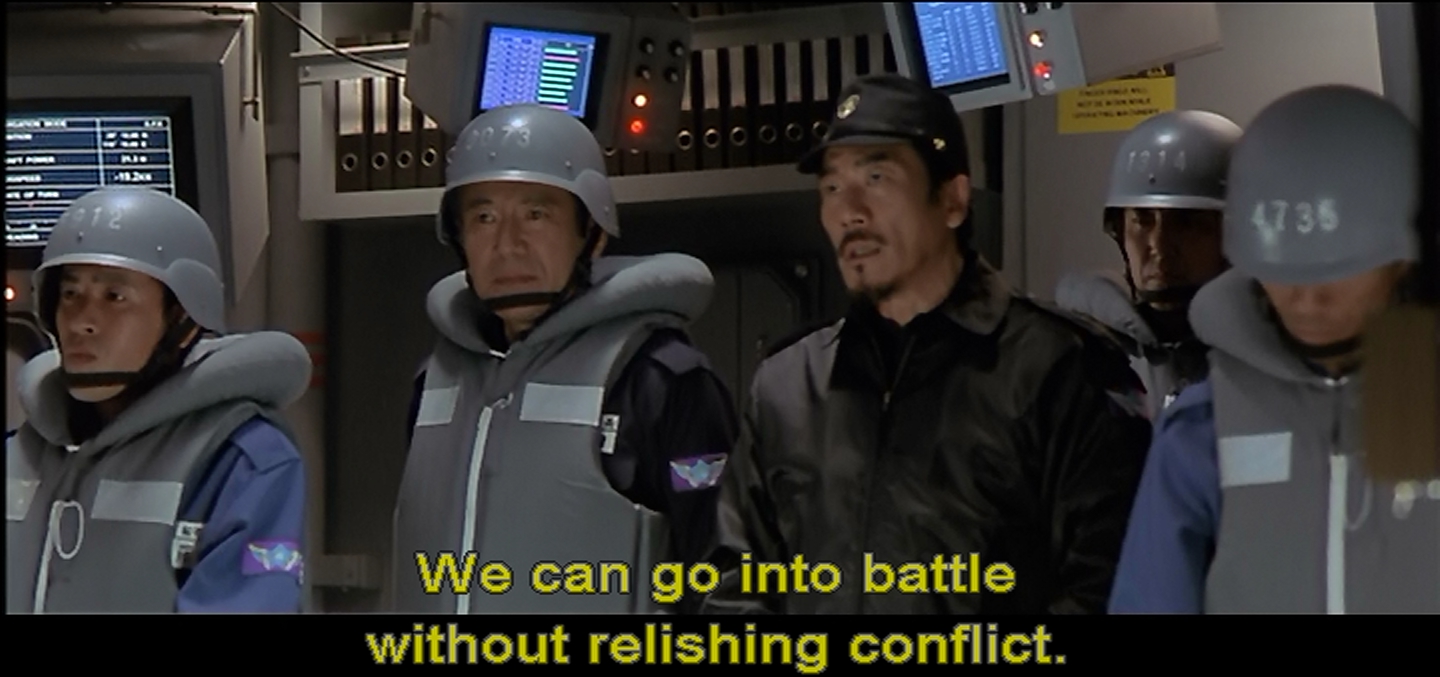
At the same time,
GMK is well aware of its roots. the Japanese Self-Defence Forces help search for a downed American Nuclear Submarine (shades of
The Return of Godzilla) with a new submersible called the
Satsuma, a callback to both the man who performed as Godzilla in the Heisei series, as well as the rescue ship from the first
Mothra film. When Godzilla comes ashore, we get a quick glimpse of a picture of Lucky Dragon #5, the fishing boat that was contaminated after the Castle Bravo nuclear test. Whwen Godzilla uses its atomic ray for the first time, a teacher looks out to see a mushroom cloud. It's the second most chilling moment in the series, after the crying woman and her children in the first
Godzilla. It reminds the modern viewer of a time when Godzilla
meant something.
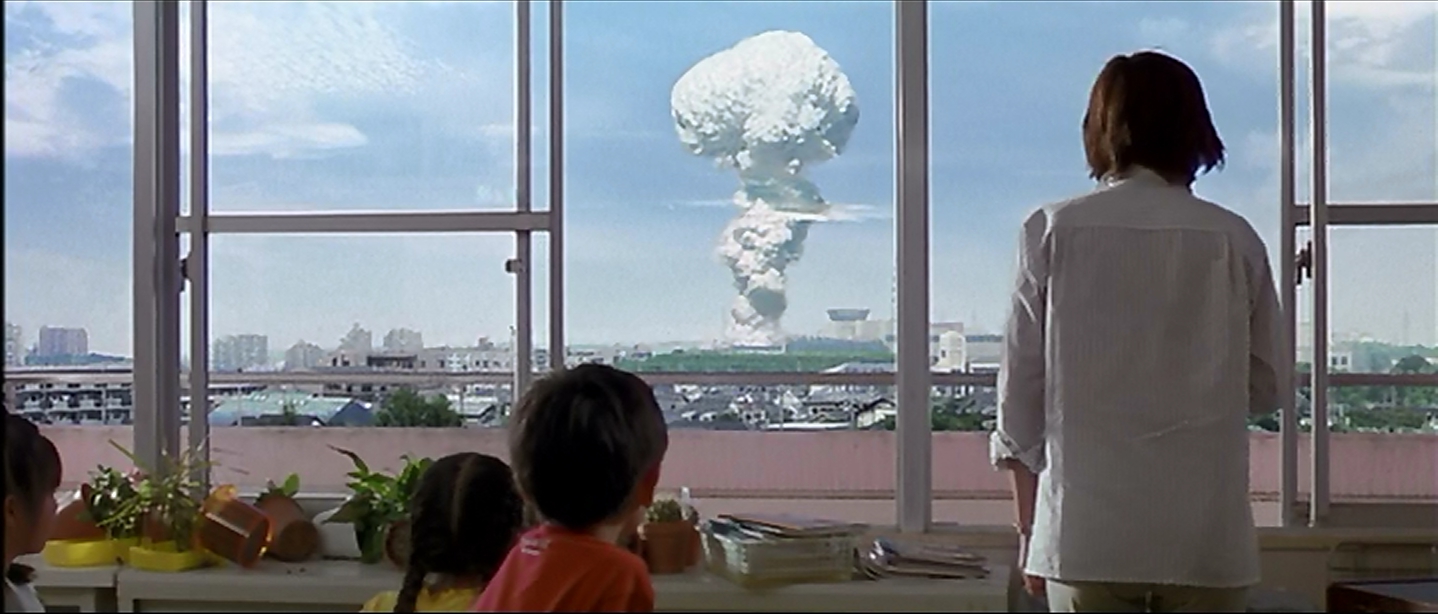
The other protagonist is Yuri Tachibana, Taizô's daugher, a reporter, one of the classic Godzilla roles. But in a subversion of the usual Showa roles, she is a sensationalist reporter, working on bogus supernatural stories. This makes her earnestness in wanting to cover real stories, the story behind the guardian monsters all the more powerful. Perhapsd the earnestness of the character grew from director and writer Kaneko's years of making soft-core romance films for Nikkatsu (the studio that had once produced
Gappa the Triphidian Monster).
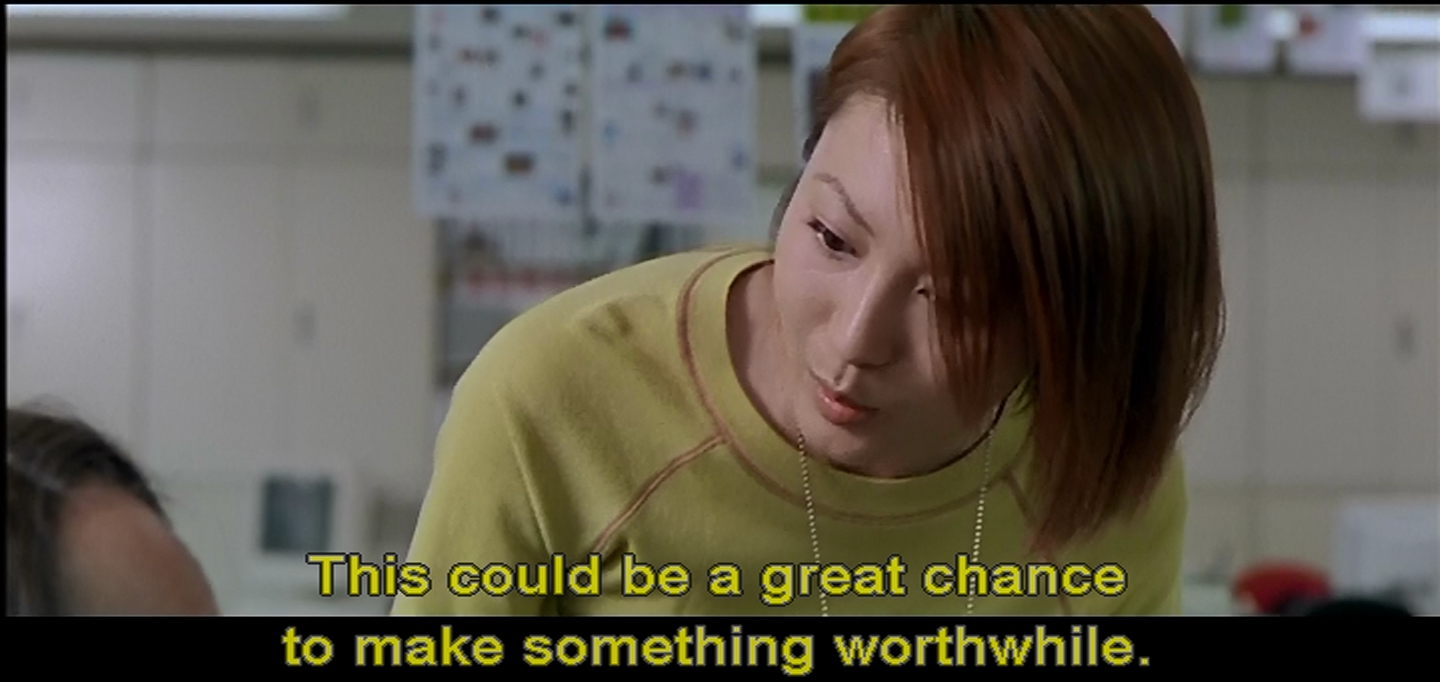
Kaneko has also brought with him several of his own ideas from his
Gamera trilogy. There are good kaiju and bad kaiju. Godzilla is a radioactive lizard infused with the angry spirits of the dead from World War 2. Mothra, Ghidorah, and Baragon are beneficial guardians, equivalent to Gamera. But although they are beneficial, they are still giant monsters, and they kill, even if by accident. The first casualties of the film are a group of obnoxious motorcyclers, crushed in a tunnel as Baragon tunnels by. Originally, Kaneko wanted the guardians to be Baragon, Varan and Anguirus, but Toho, remembering the poor return from
Megaguirus, insisted their two most popular kaiju, Mothra and Ghodorah, be used. And it works, Ghidorah is the thousand-year dragon, and Mothra started out being worshipped as a god. Which brings some interesting images to mind. I would have liked to see Varan arise in glory after being charged up the way King Ghidorah was.
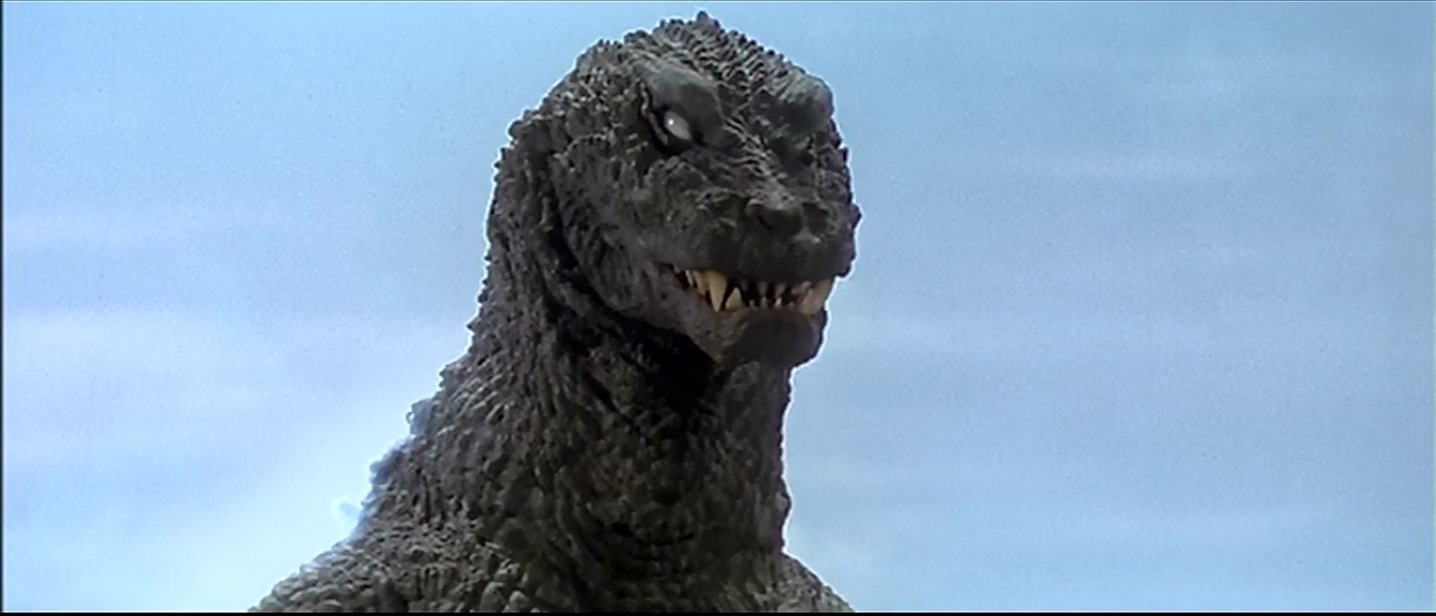
The guardian monsters also appear to be moral guardians. The above-mentioned obnoxious bikers break a statue, and get crushed by Baragon cruising by. A group of looters disturb one of Mothra's guardian statues, and they are pulled under the water one by one. Godzilla, on the other hand, does not discriminate. People who are in his way die.
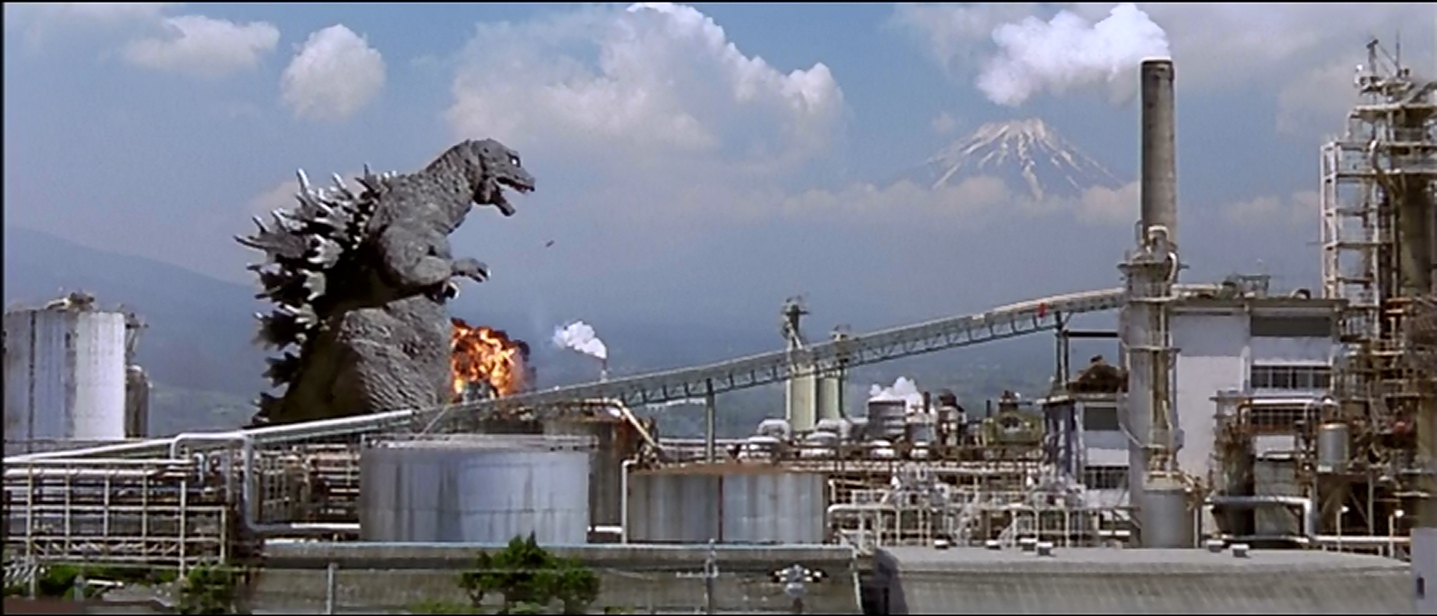
Further, there's a lot of confusion as to what's going on among the film's characters. With only second hand reports, the military cannot determine which monster is which. It's thirty minutes into the film before the military believes that there's more than one montser. There are no grand overarching shots that show them which is which.
Meanwhile, civilians constantly underestimate the deadliness of the monsters. A pair of tourists want selfies in front of the Godzilla and Baragon fight. They don't make it out alive.
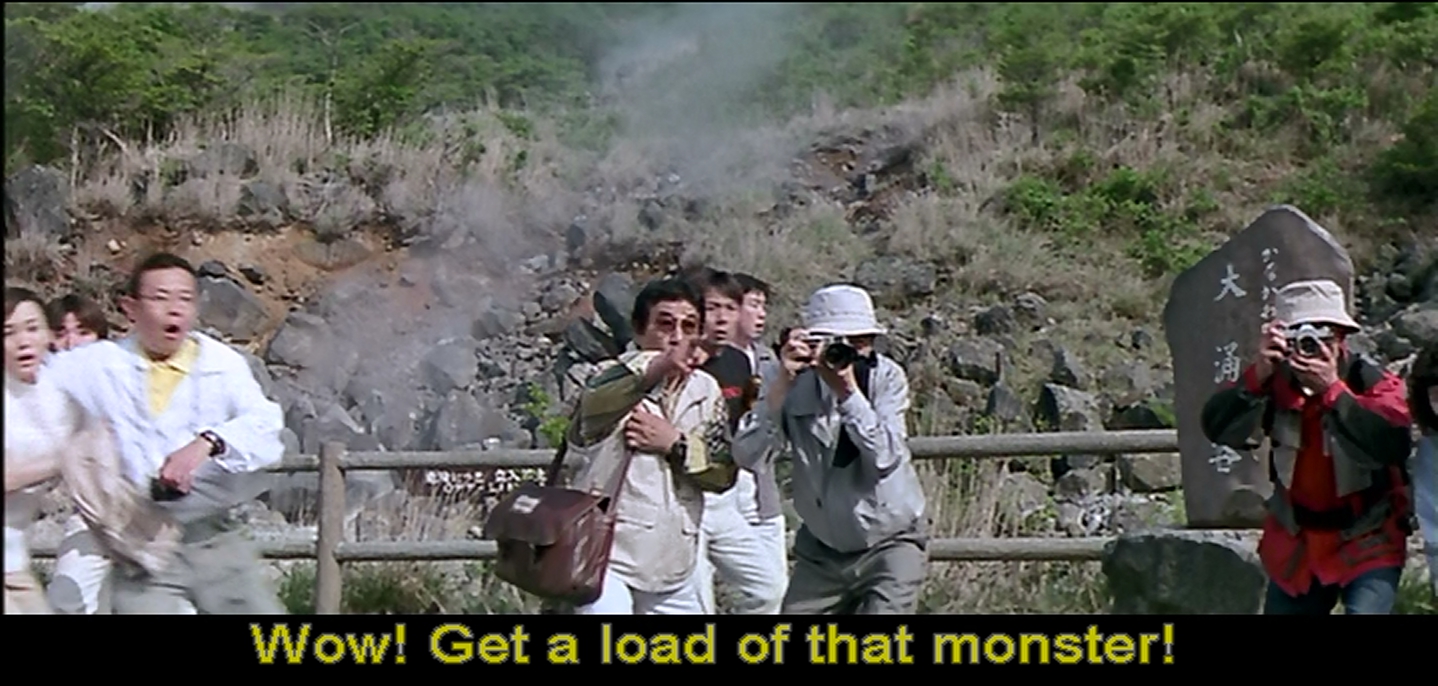
Godzilla looks very different here than he did in the previous two Millennium films. He is no longer lean, but almost bloated, his eyes dead white, his snout blunt. The spines are blunt, also, not the long starp ones Godzilla is an ugly brute. He is not a force of nature, not the hero, but a furious engine of destruction, crushing everything in his path.
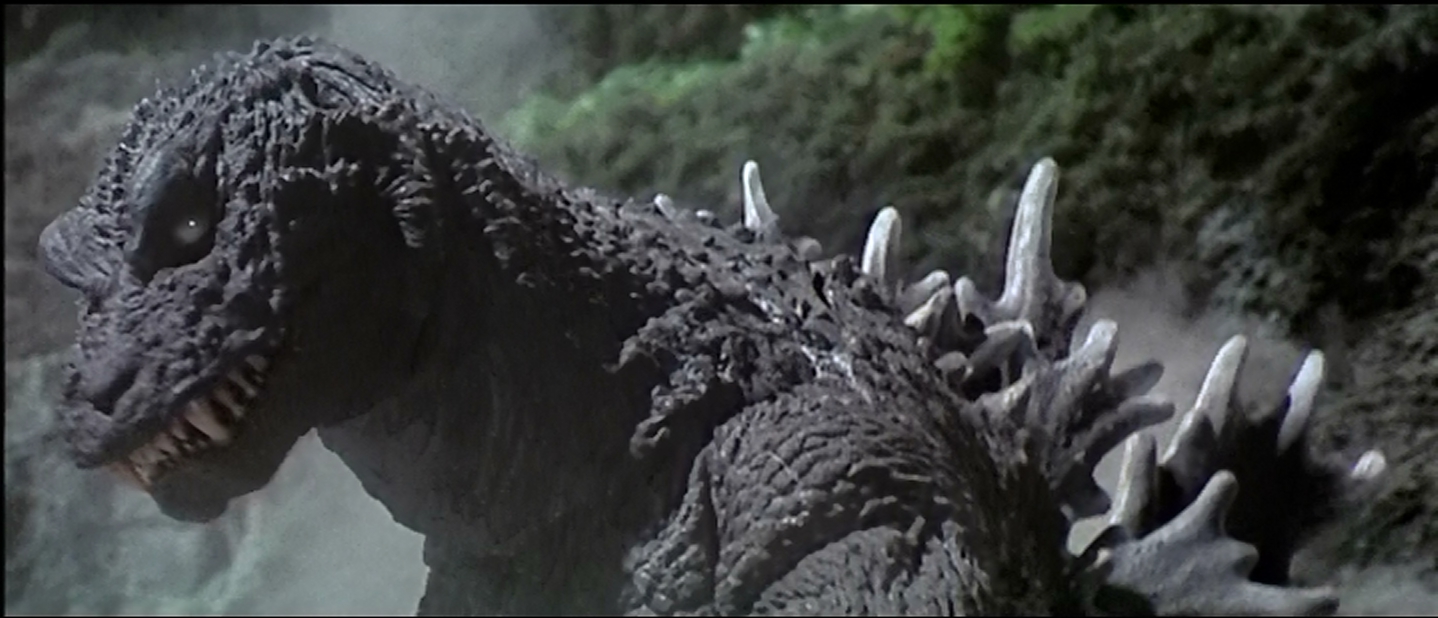
The monster fights are spectacular. The first one is Baragon against Godzilla. Godzilla is enormous compared to Baragon, and the entire thing is a beat-down. Baragon is clearly outmatched, but it will not give up its attack. Godzilla fires off its atomic heat ray, and Baragon disintigrates, leaving Mothra and Ghidorah to fight Godzilla.
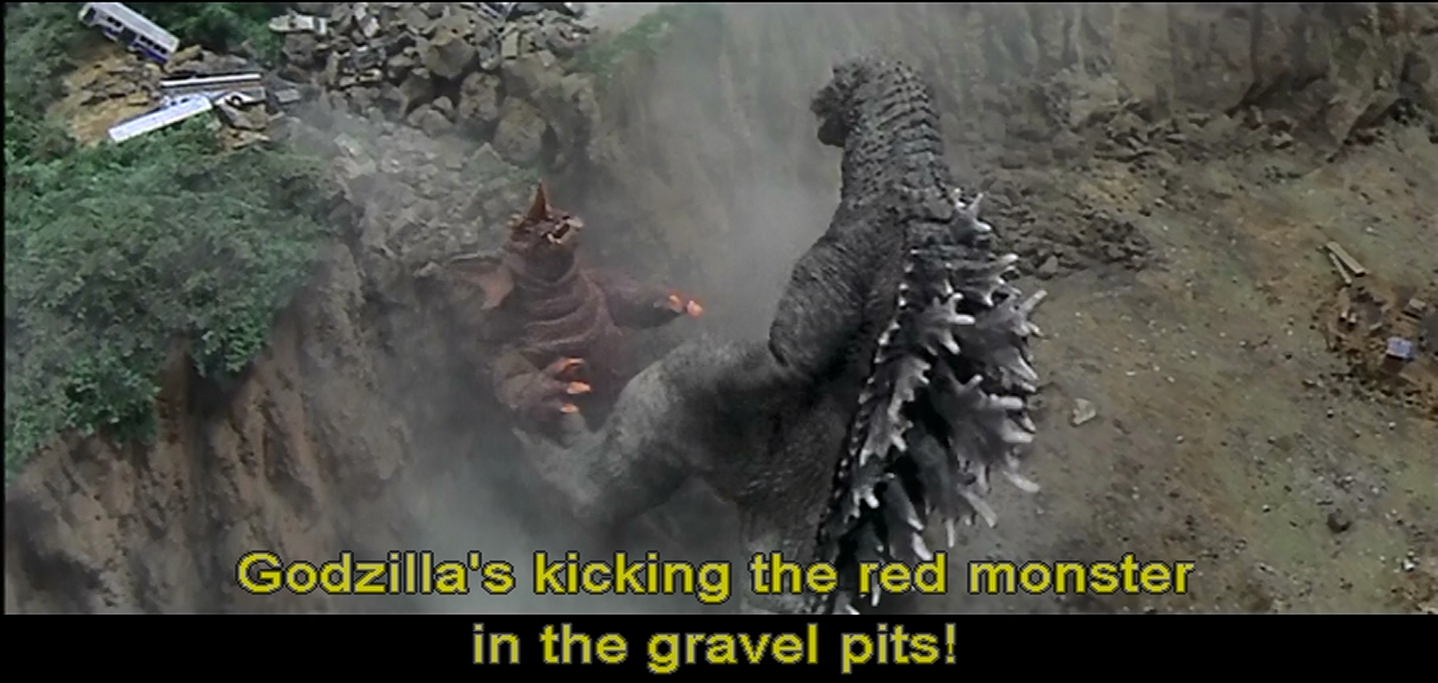
Mothra ahs changed a bit since her appearance in the Hesei
Godzilla vs Mothra: Battle for the Earth. It's not as aggressive-looking as the last
Rebirth of Mothra, and that's a bit unfortunate. The later evolutions of Mothra were very dynamic looking, with straight leading edges ion their wings. This is a step backwards toward the traditional Mothra, admittedly the one that nearly took Godzilla to the cleaners in
Godzilla vs Mothra. But she's less fussy than she has been, not as much a nurturing monster as something that does look ready for a fight. Further, she's been equipped with a battery of stingers, so she does not have to rely on the poisonous scales.
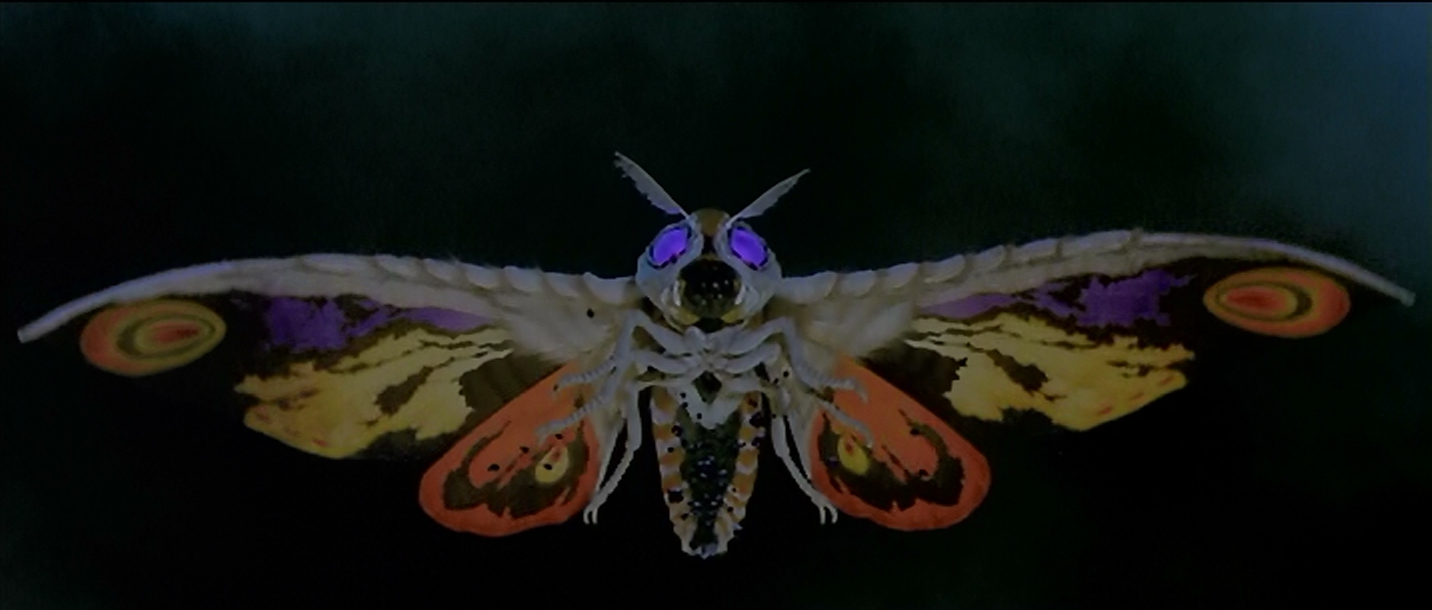
Ghidorah is much the same, if a bit smaller smaller he has been. It does take on a couple of power-ups in the course of the fight.
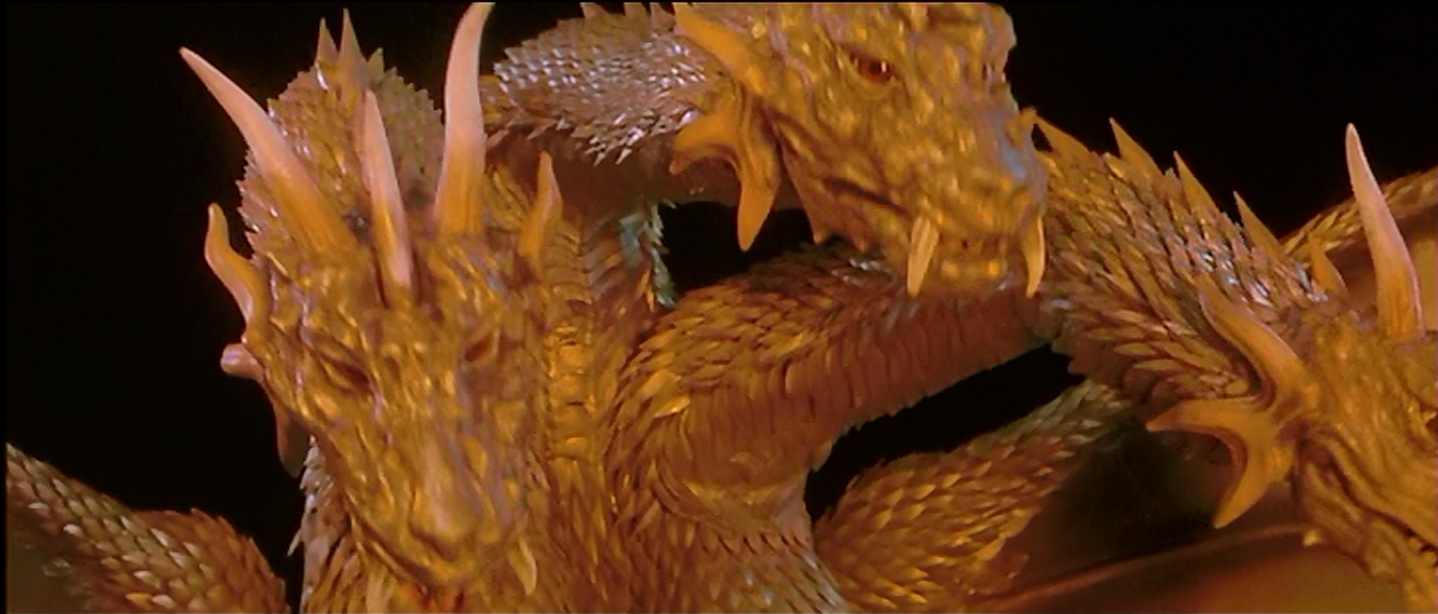
The second battle, with Mothra, Ghidorah, and Godzilla in Yokohama, is one of the best kaiju battles ever put to screen. Godzilla is a brute, smashing everything. When Mothra attempts to lansd on a tall building that happens to contain soldiers, Godzilla sends its atomic ray through it, killing the men, destroying the tallest building in Yokohama.
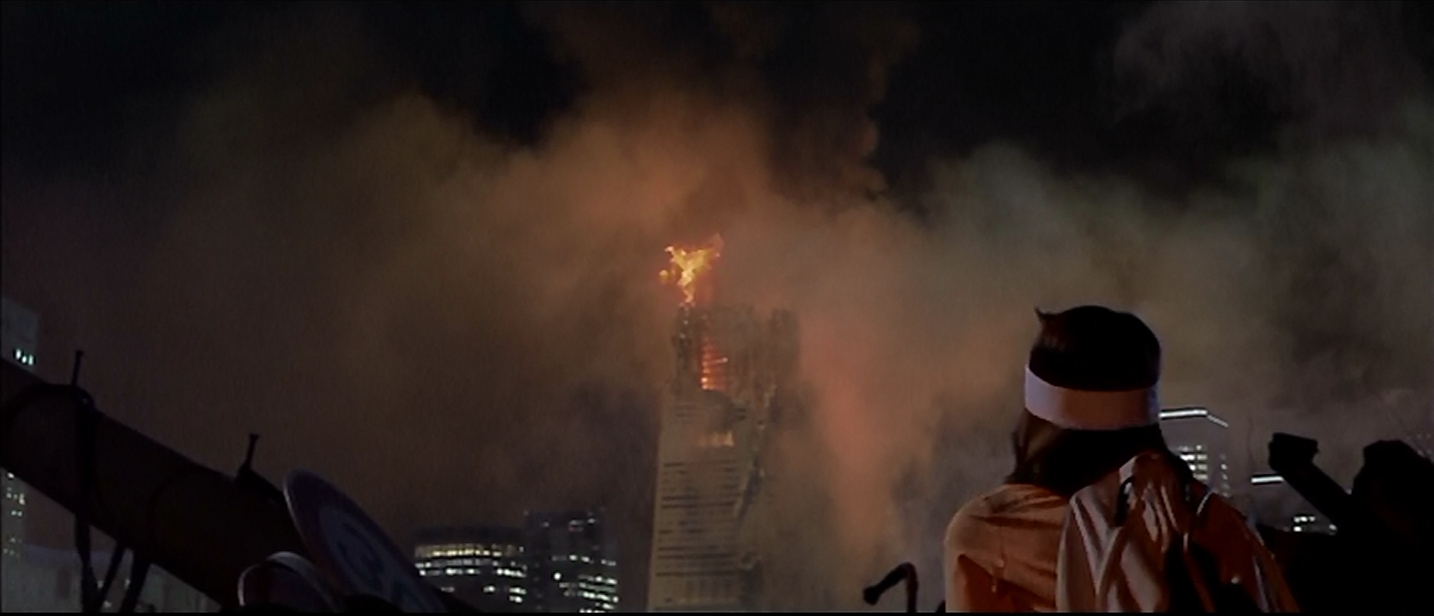
After the first ten minutes, the fight is no longer shot over complete buildings, but the rubble of structures already destroyed. This helps with the overall sense of dark weight this film has. Men are being killed, buildings are being destroyed, and this is reinfoced by repeated viewings, giving the destruction a sense of permanence.
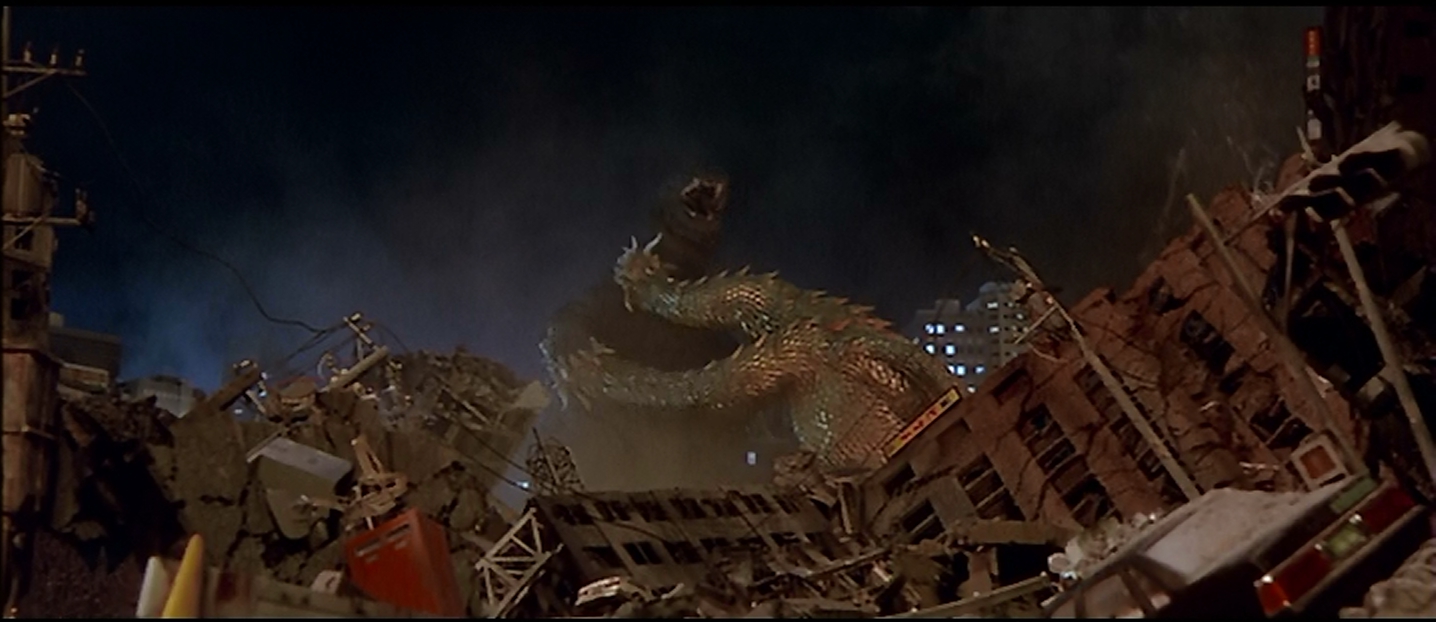
Godzilla, while it has its teeth in one of Ghidorah's necks, casually swats Mothra aside with its tail, a move borrowed later in
Godzilla 2014.
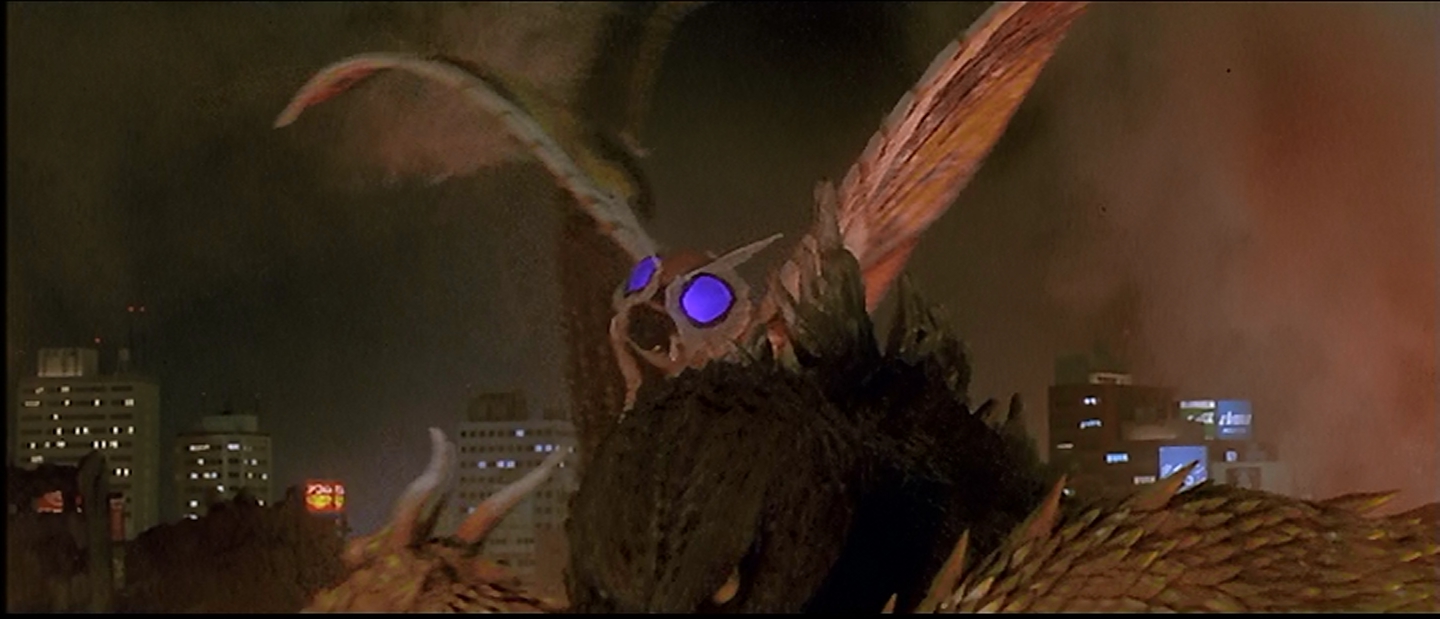
When both Mothra and Ghidorah go down temporarily, the military moves in. While the display is impressive, it only attracts Godzilla's destructive attention. Godzilla sweeps his atomic ray across the men, annihilating entire platoons, then blowing a destroyer out of the water.
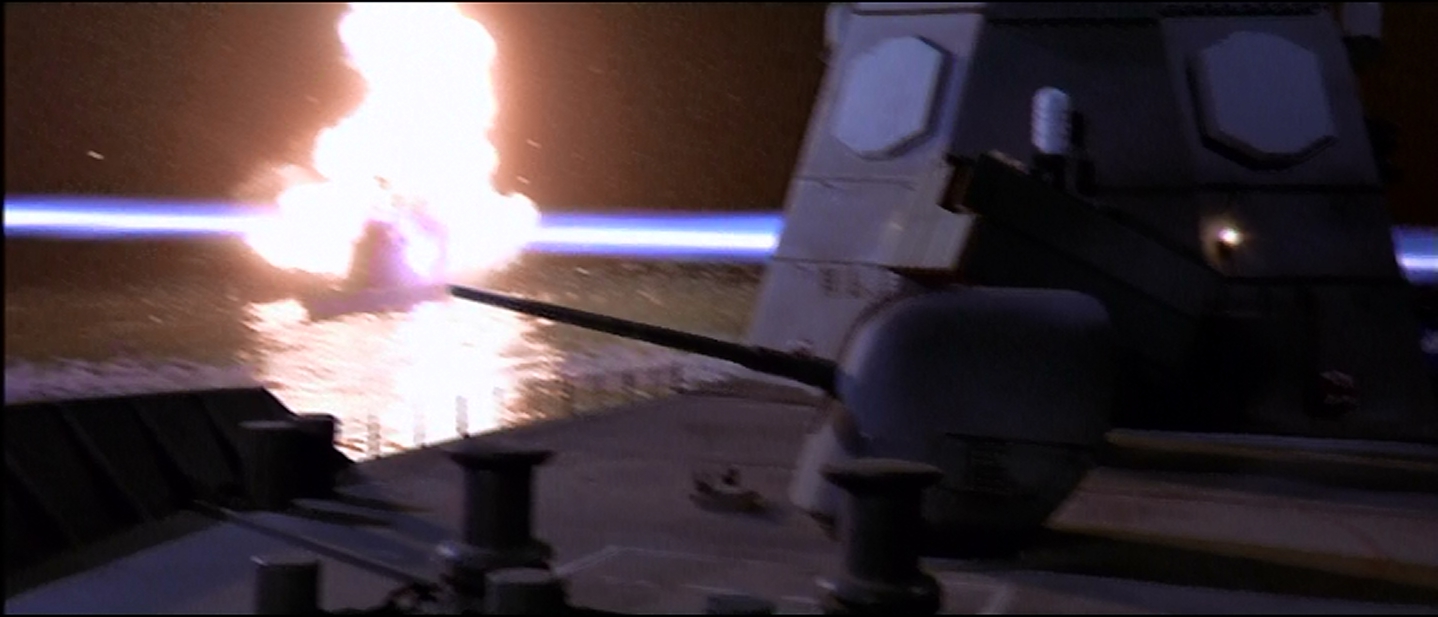
From the smoking shore, Godzilla roars his triumph.
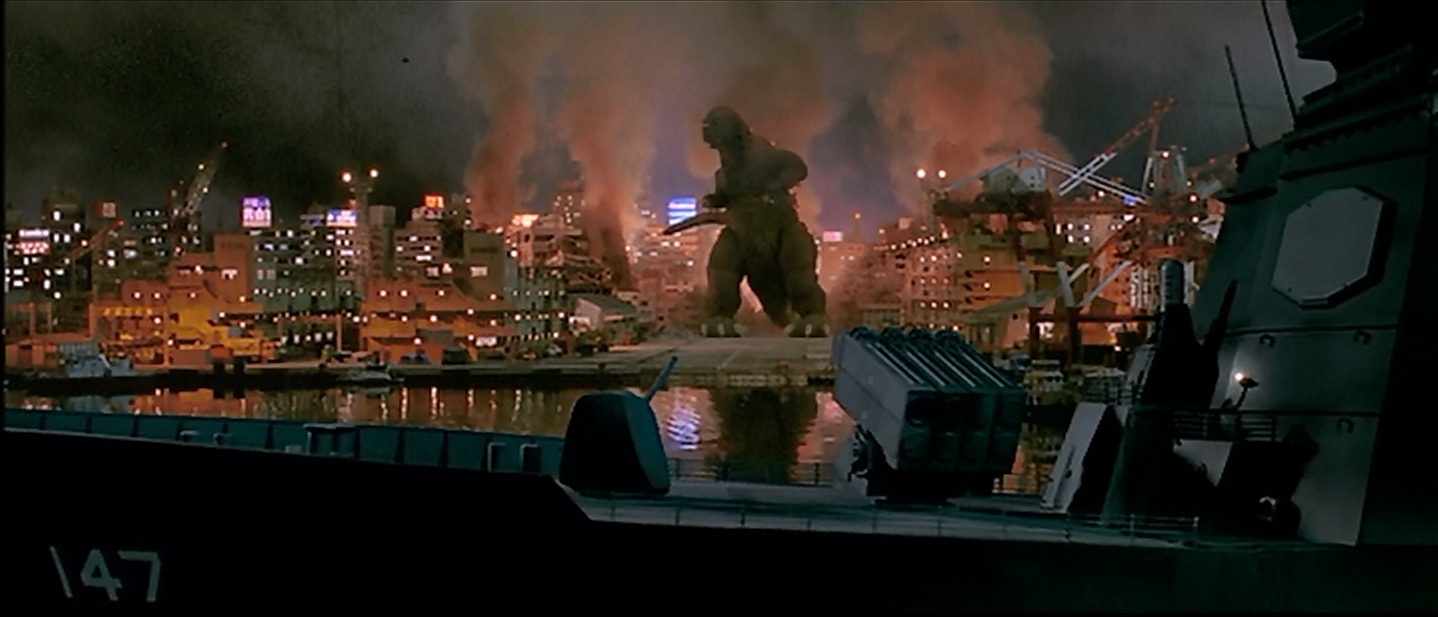
But at least it keeps Godzilla from destroying the helpless guarsian monsters. Very seldom have human and kaiju worked in such good harmony.
Mothra, wings on fire, confronts Godzilla again, only to be disintigrated by a close-in blast. Like
Biolante, she disintigrates into golden particles. These flow into the downed Ghidorah, who awakens, now with a forcefield surrounding it like a clould of electrons.
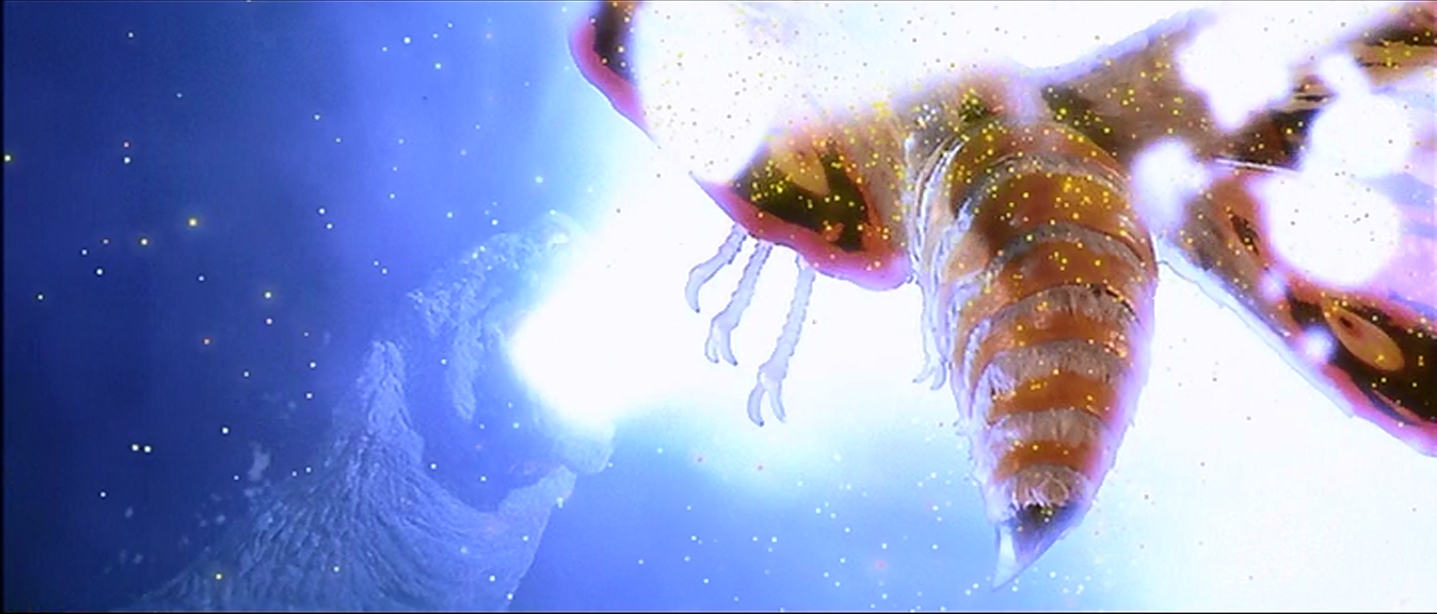
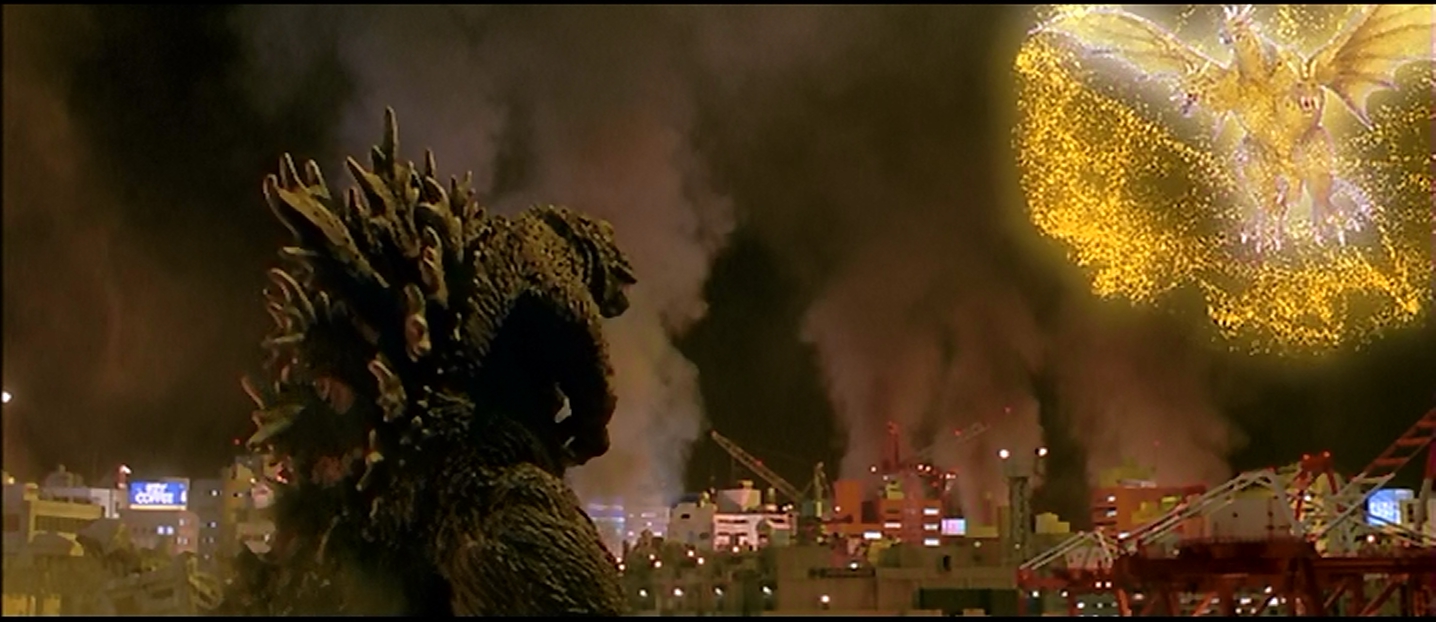
Godzilla lays into this with a long blast of its heat ray, but Ghidorah collects the energy and returns it to sender in a gigantic ball of destructive energy. At last, Godzilla is wounded.
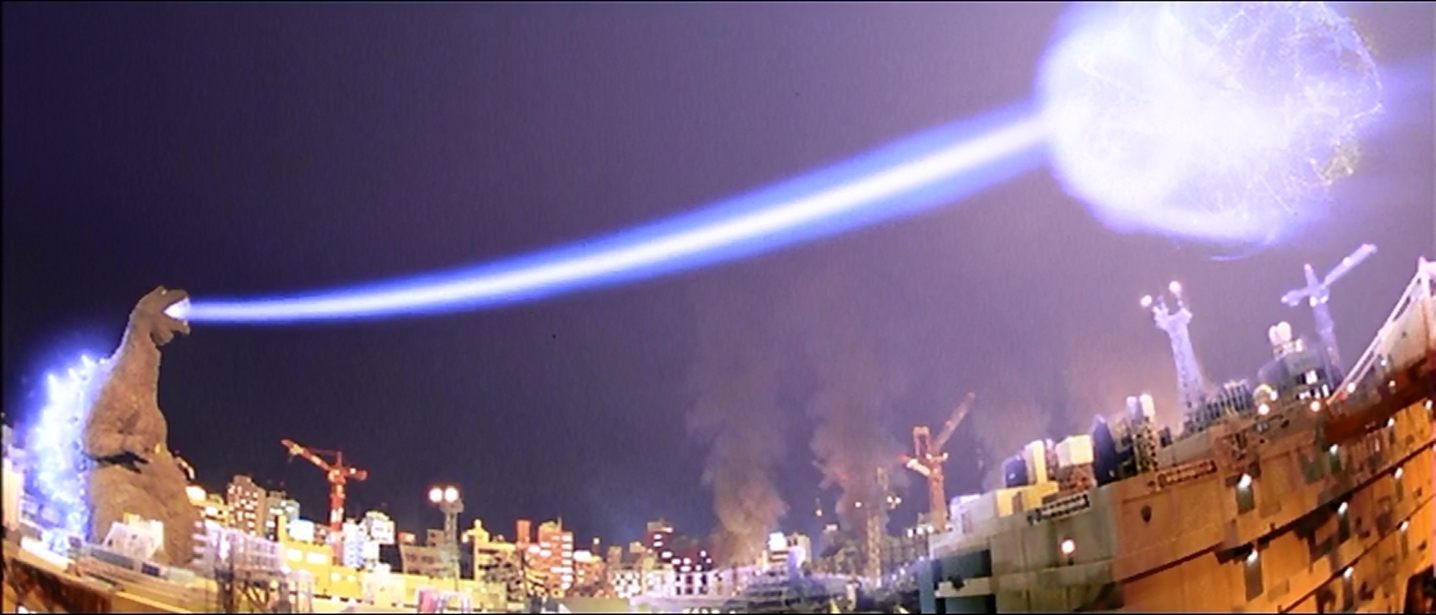
This doesn't prevent him from unleashing his ray on Ghidorah, and creating a frikkin' huge explosion as the three-headed monster disintigrates.
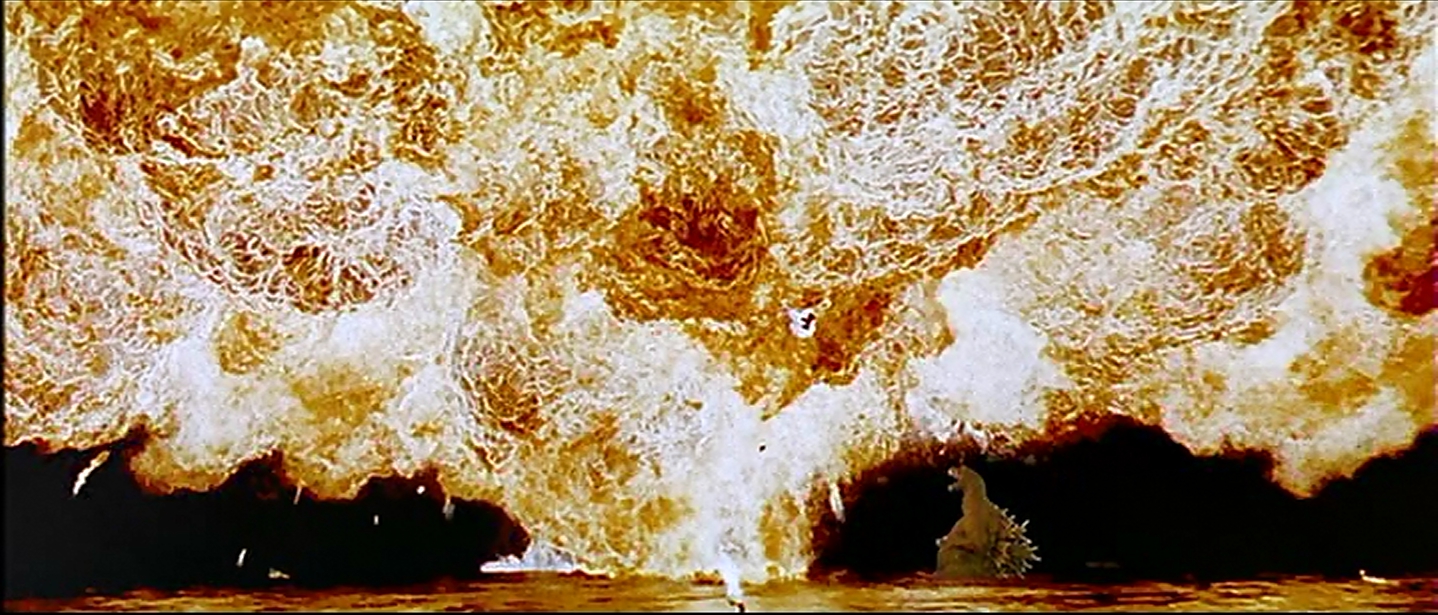
With the Guardians gone, Tachibana pilots his submersible literally down Godzilla's throat, and relesases the drill torpedo from inside. Godzilla collapses and sinks, pouring blood into the water. Attempting to use its heat ray, Godzilla manages to destroy itself, leaving only a heating heart at the bottom of the bay.
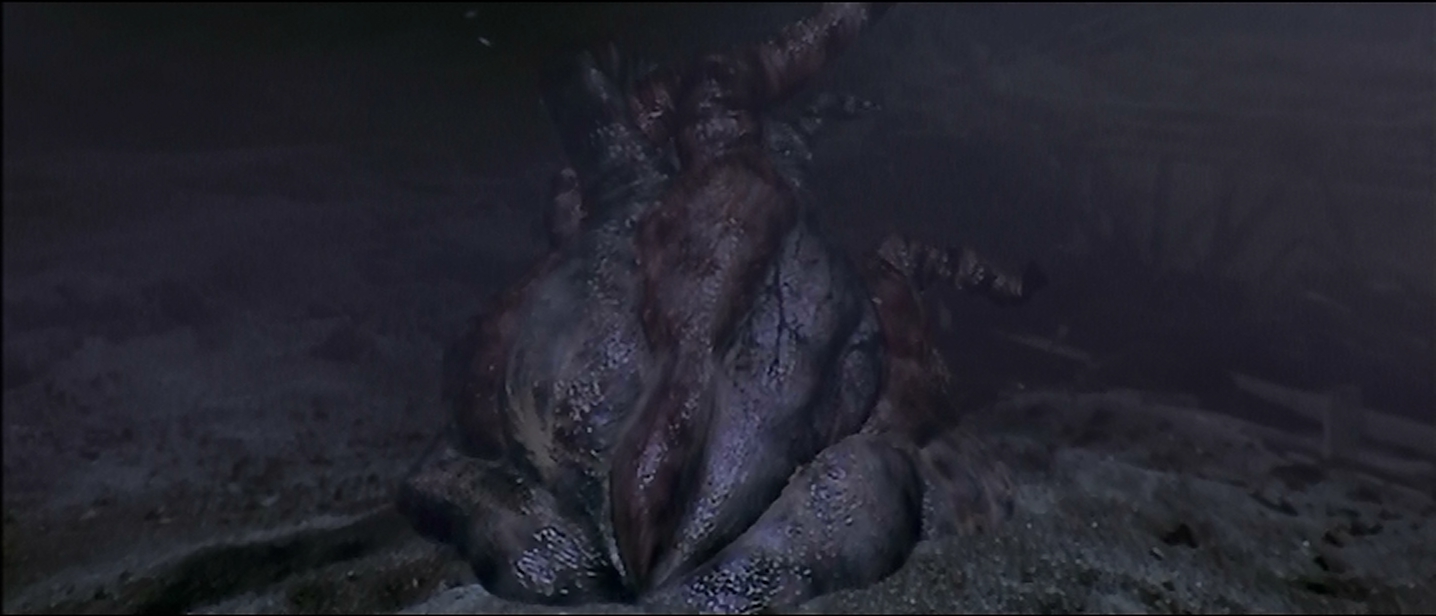
The film is political, and I'm not steeped in Japanese culture enough to honestly reflect on Japan's relationship with World War II. But Kaneko is clearly making a statement that Japan is in denial of its responsibility for many deaths in the Pacific during that conflict. Far from destroying the film, which was released as a double-bill with
Hamtaro, an animated film about a hamster, this is the most successful film in the Millennium series.
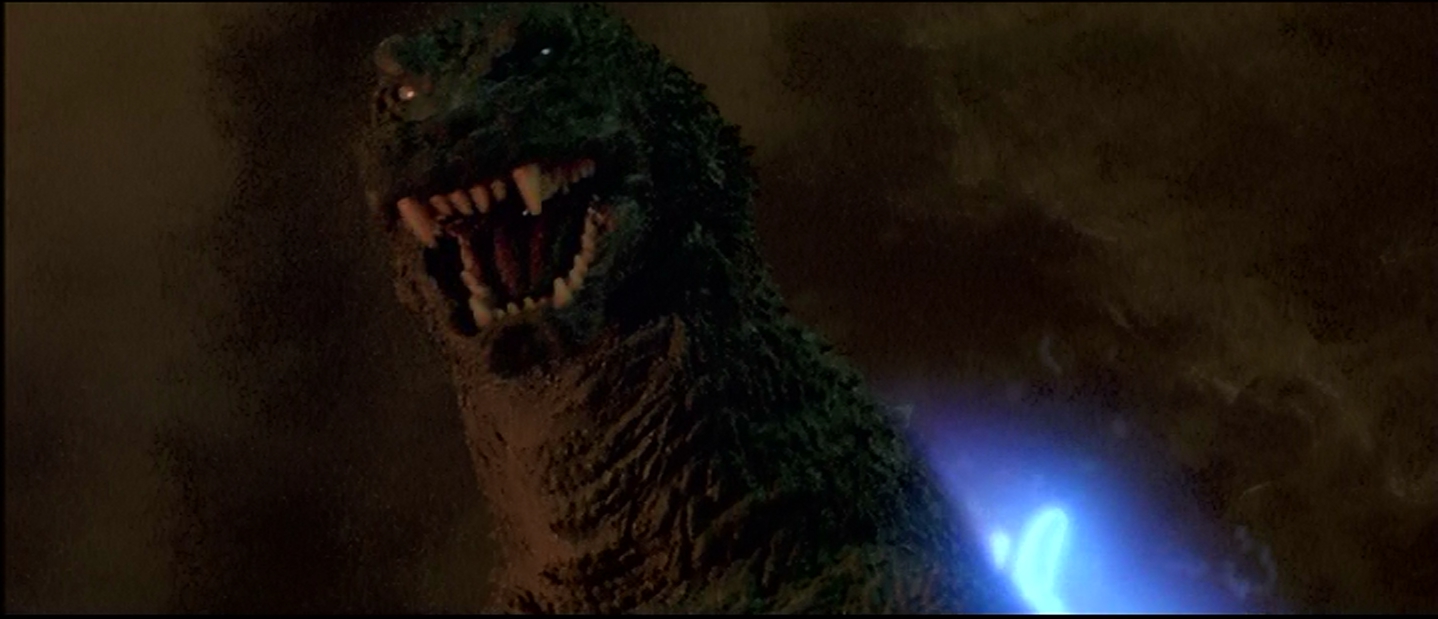
Despite, or perhaps because of the layers of subtext, this is one of the best Godzilla films out there. The dark edge appeals to me, and the extended monster fight at the end of the film is everything I could ask for. The writing isn't embarassing, there are no random experts who show up with impossible answers, the characters are well drawn. Shûsuke Kaneko turned Gamera from an extended
Mystery Science Theater 3000 gag into an excellent trilogy of kaiju films. He brings the same love and devotion to kaiju film making here. Visrually, the story is exciting and Godzilla is seen with a badly-neede fresh set of eyes.
Of further note is director's excellent choice for score. Kô Ohtani has worked with director Kaneko on his three
Gamera films, and the score is excellent. Unlike Michiru Ôshima, who provides a full orchesttral score, Ohtani gives us something a little more electronic, but it's a thrilling, beautiful bit of work.
Godzilla, Mothra, King Ghidorah, Giant Monsters All-Out Attack was a financial and critical success, considered by myself and many other fans as the best of the series. So naturally, Toho returns back to, director of
Godzilla vs Megaguirus for the next film.
